In order to view this website correctly, you will need to have JavaScript enabled in your browser.
Skip to main content.
- Travel Trade & Press
- School Trips
- Business Events
GO TOKYO The Official Tokyo Travel Guide
New & Now
Tokyo Area Guide
Things to Do
Plan Your Trip
- Choose Language 日本語 ENGLISH 中文(简体) 中文(繁體/正體) 한글 ภาษาไทย DEUTSCH ITALIANO ESPAÑOL FRANÇAIS
Share this page
- X (Twitter)
- My Favorites
- All New & Now options
- New & Trending
- Spring Guide
- Summer Guide
- Autumn Guide
- Winter Guide
- Places The Locals Go
Stories & Guides
- Another Tokyo
- All Things to Do
- Attractions
- Food & Drink
- Onsen & Bathhouses
- Art & Design
- Anime & Manga
- Time Trip Tokyo
- Walks & Tours
- Tokyo Event Calendar
- All Tips to Plan Your Trip
- Accommodations
- Getting to Tokyo
- Getting Around
- Airport & Cruise Terminal Access
- Customs & Manners
- Weather & Geography
- Visa & Immigration
- Tokyo at a Discount
- Tours of Tokyo
- TOKYO Brochures
- PDF Maps & Guides
- Tourist Information Centers
- Online Tourist Guide
My Tokyo Guide
See something interesting? Click on the heart button in the article to add a page from this site to My Favorites.
Popular Keywords
- Guide Service
Advanced Search
- From open calendar
- To open calendar
- All Stories & Guides
Select Language
- ESPAÑOL
- FRANÇAIS

- A guide to the Tokyo Imperial Palace: history & how to tour
Main content starts here.
Updated: October 28, 2020
Tokyo Imperial Palace and its beautiful gardens are a world away from the hustle bustle of the city. Just a 10-minute walk from Tokyo Station and the high-rise Marunouchi financial district, this calm green oasis covers an impressive 1.15 square kilometres in the central Chiyoda Ward. Built on the site of the former Edo Castle, the palace became the permanent home of the Imperial Family in 1869. While you can’t go inside, except on rare special occasions that let you glimpse the interior, the surrounding manicured lawns, topiary trees and meticulously maintained gardens are not only visually enchanting but give a good idea of what being royalty is all about.

Edo Castle turned Imperial Palace
For over 250 years, Japan was ruled by the Tokugawa shogun during what was known as the Edo Period – Edo being the old name for Tokyo. The current Imperial Palace, known as Kokyo in Japanese, sits on the former site of Edo Castle. However, in 1868, the shogunate was overthrown, and Japan’s capital was moved from Kyoto to Tokyo, with the Imperial Residence moving with it. The palace was destroyed during the Second World War but rebuilt in a similar style afterwards.
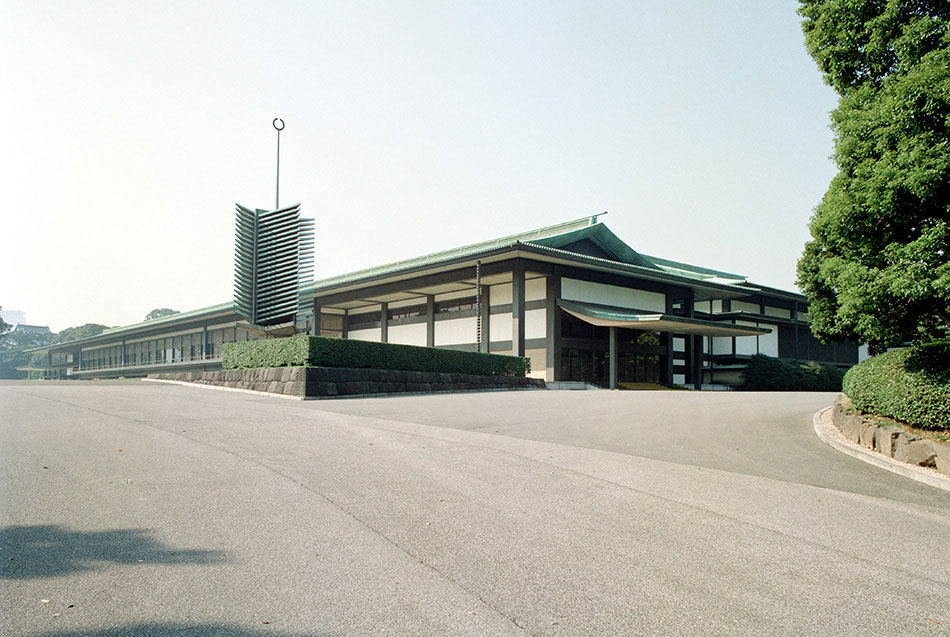
Copyright Imperial Household Agency of Japan
Visiting the Tokyo Imperial Palace
You can call by the site of the Imperial Palace any time –its perimeter is a popular jogging route and the East Gardens are open to the public year-round. However, to make the most of your visit and get a good historical overview, put on some comfortable shoes and take a walking tour.
Check the Imperial Palace’s official website for a map of the grounds.
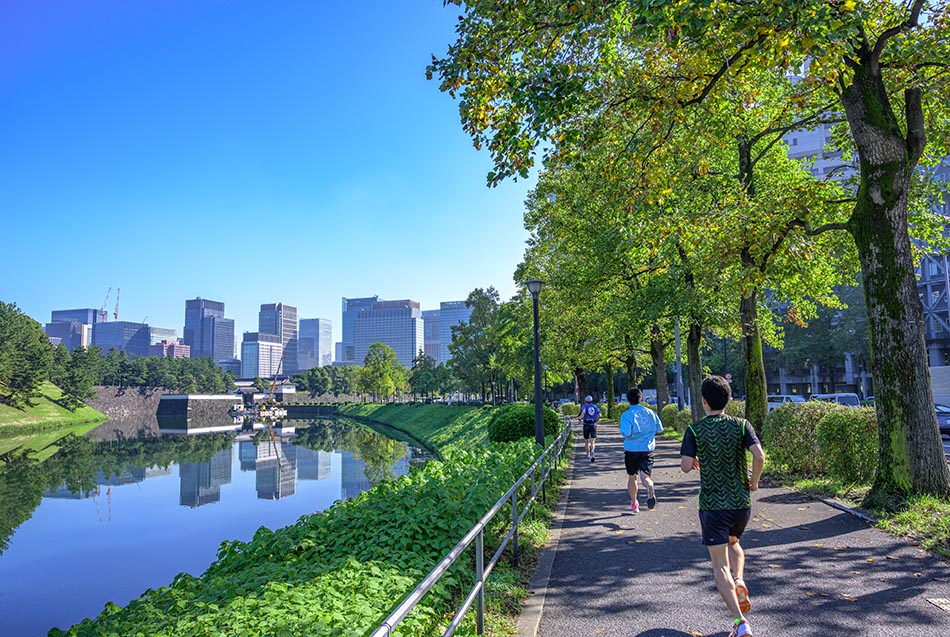
Imperial Palace Walking Tour
Some part of the inner palace grounds can only be viewed on a tour, which is held in English and Japanese, twice daily, Tuesday thru Saturday. While same-day tickets are available, you can easily skip the queues by making an advance reservation for a ticket through contacting the Imperial Household Agency. The tour is open and distributed from 9:00 for the morning tour starting at 10:00, and 12:30 for the afternoon tour starting at 13:30. The 75-minute tour meets at Kikyomon Gate. Although it won’t take you inside the palace, you will get the chance to see historical and beautiful sites such as the Mt. Fuji-view Keep and the Lotus Moat, and, of course, you will cross over the famous Nijyu Bridge, considered a symbol of the palace and even Tokyo itself.
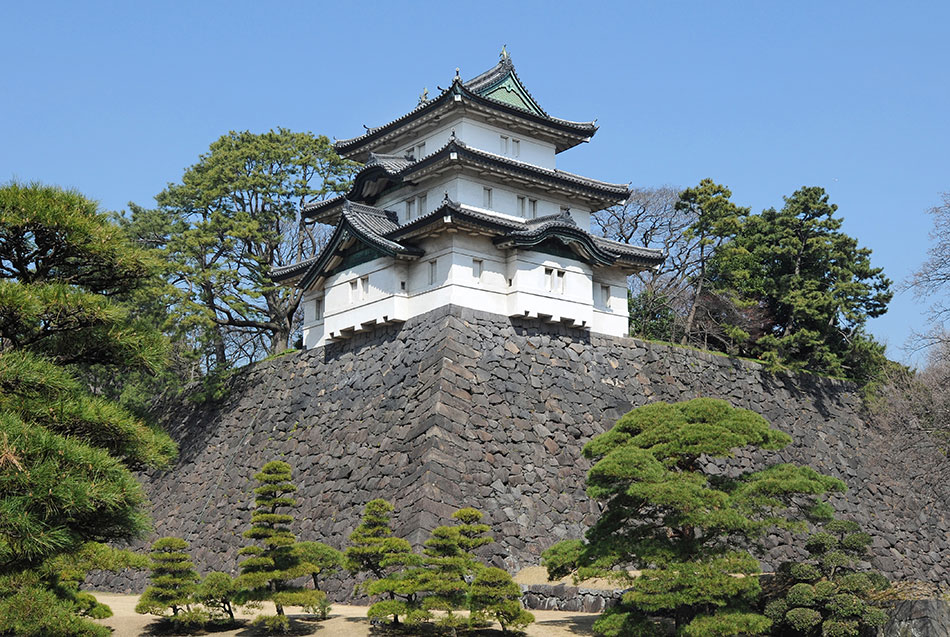
East gardens
Open daily except Mondays, Fridays and designated holidays, these beautiful Japanese gardens are free to the public and especially popular for their dazzling cherry blossoms during the spring and their vibrant autumn foliage later in the year. Take a stroll for a glimpse into the area’s history as the former site of Edo Castle-you can view and climb the foundation of a castle tower that burned down over 350 years ago. Also stop by the Museum of the Imperial Collections.
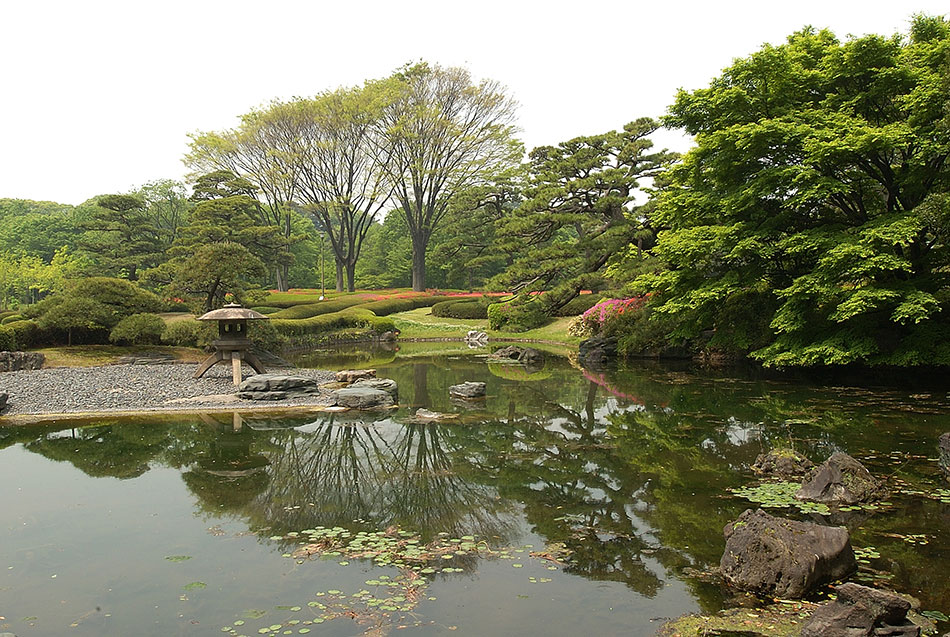
"Ippan Sanga"- Seeing the Imperial Family
Since the Imperial Palace is the main residence of the Imperial Family, it is fairly understandable that they can’t welcome visitors all year round. But there are two days a year when you catch a glimpse of them up close. As part of a New Year celebration , on January 2nd, the grounds of the Imperial Palace are open to the general public. Large crowds gather in the square in front of the Chowaden Reception Hall where the Imperial Family make five scheduled public appearances from morning to early afternoon. Due to the large crowds, leave your bags behind and wear comfortable shoes. It may take more than two hours to get to the Main Gate from the Front Plaza of the Imperial Palace due to a large turnout so make sure to arrive well in advance.
The other opportunity to get up close to the Imperial Palace is on the date of the current Emperor’s birthday-February 23rd. The Imperial Family will make three appearances and you can also sign the Greeting Book.
Hotels near the Imperial Palace
Sitting truly in the heart of Tokyo and with great access to the city, there are plenty of hotels around the Imperial Palace. Imperial Hotel Tokyo is a luxurious hotel that has won 5 stars on the hotel information website "five Star Alliance". It opened in 1890 in order to accommodate an influx of distinguished international visitors.
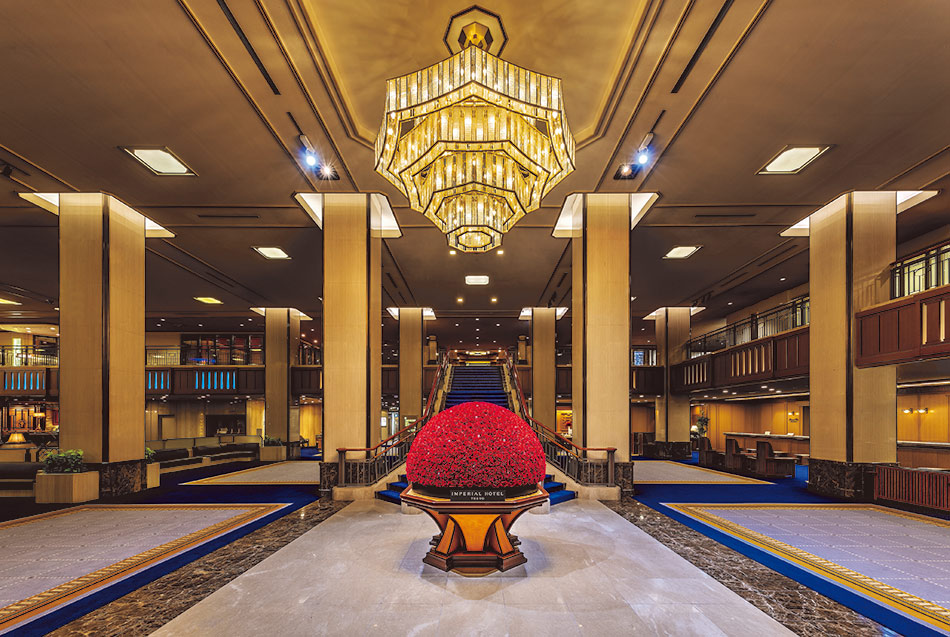
The Forbes Travel Guide five-star Palace Hotel Tokyo is also known for its perspective on the city and a singular, moat-side setting just opposite the Imperial Palace gardens.
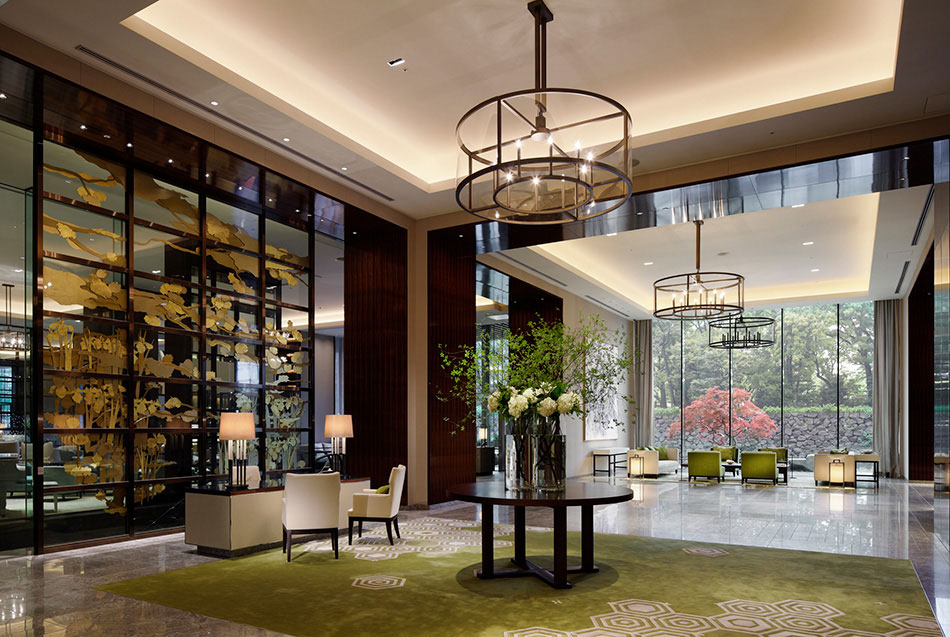
For more mid-range and budget accommodation, take a look in the Hanzomon area on the western edge of the palace grounds or around Kudanshita to the north.
Find Out More
- Experiences & Activities
- Historical Sites
- Parks & Gardens
- Visit Tokyo >
- Tokyo Area Guide >
- Central Tokyo >
- Tokyo Station & Marunouchi area travel guide >
- About This Site
- Font Size and Color
Copyright © Tokyo Convention & Visitors Bureau. All rights reserved.
- Media & Industry
- Meetings & Events
- Select Language 简体中文 繁體中文(香港) 繁體中文(臺灣) India (English) Bahasa Indonesia 한국어 ภาษาไทย Tiếng Việt Singapore (English) Philippines (English) Malaysia (English) Australia/New Zealand (English) Français Deutsch Italiano Español United Kingdom (English) Nordic countries(English) Canada (English) Canada (Français) United States (English) Mexico (español) Português العربية Japan(日本語) Global (English)
- India (English)
- Bahasa Indonesia
- Singapore (English)
- Philippines (English)
- Malaysia (English)
- Australia/New Zealand (English)
- United Kingdom (English)
- Nordic countries(English)
- Canada (English)
- Canada (Français)
- United States (English)
- Mexico (español)
- Global (English)
- Fujiyoshida
- Shimonoseki
- Ishigaki Island
- Miyako Island
- Kerama Island
- Tokyo Island
- Koka & Shigaraki
- Hida Takayama
- Ginza, Nihonbashi
- Beppu & Yufuin (Onsen)
- Ginzan Onsen
- Nagasaki Islands

- Kumano Kodo
- Shikoku Karst
- Amami Oshima
- Hachimantai
- Omihachiman
- Aizuwakamatsu

- Diving in Japan
- Skiing in Japan
- Seasonal Flowers in Japan
- Sustainable Outdoors
- Off the Beaten Track in Japan
- Scenic Spots
- World Heritage
- Home Stays & Farm Stays

- Japanese Gardens
- Japanese Crafts
- Temple Stays
- Heritage Stays
- Festivals and Events
- Theater in Japan
- Japanese Tea Ceremony
- Cultural Experiences in Japan
- Culture in Japan

- Local Cuisine Eastern Japan
- Local Cuisine Western Japan
- Local Street Food
- Japan's Local Ekiben
- Japanese Whisky
- Vegetarian and Vegan Guide
- Sushi in Japan Guide
- Japanese Sake Breweries

- Art Museums
- Architecture
- Performing Arts
- Art Festivals
- Japanese Anime and Comics
- Japanese Ceramics
- Local Crafts

- Scenic Night Views
- Natural Wonders
- Theme Parks
- Samurai & Ninja
- Iconic Architecture

- Wellness Travel in Japan
- Japanese Ryokan Guide
- A Guide to Stargazing in Japan
- Relaxation in Japan
- Forest Bathing (Shinrin-yoku)

- Experiences in Japan
- Enjoy my Japan
- National Parks
- Japan's Local Treasures
- Japan Heritage
- Snow Like No Other
- Wonder Around Japan

- Visa Information
- Getting to Japan
- Airport Access
- COVID-19: Practical Information for Traveling to Japan
- Anime Tourism
- Countryside Stays
- Accessible Tourism
- Hokkaido Great Outdoors
- Scenic World Heritage in Tohoku
- Shikoku’s Nature and Traditions
- Southern Kyushu by Rail

- Traveling by Rail
- How to Travel by Train and Bus
- JR Rail Passes
- Scenic Railways
- Renting a Car
- Sustainable Travel in Japan
- Travel Brochures
- Useful Apps
- Online Reservation Sites
- Eco-friendly Accommodation
- Luxury Accommodations
- Traveling With a Disability
- Hands-free Travel
- How to Book a Certified Tour Guide
- Volunteer Guides
- Tourist Information Center

- Japanese Manners
- Spring in Japan
- Summer in Japan
- Autumn in Japan
- Winter in Japan
- Cherry Blossom Forecast
- Autumn Leaves Forecast

- Japan Visitor Hotline
- Travel Insurance in Japan
- Japan Safe Travel Information
- Accessibility in Japan
- Vegetarian Guide
- Muslim Travelers
- Safety Tips

- JAPAN Monthly Web Magazine
- Arts & Cultures
- Nature & Outdoor
- Festivals & Events
- Insider Blog
- Things to do
- Local Guides
- Food & drink
- Traditional
- Hokuriku Shinetsu

My Favorites
${v.desc | trunc(25)}
Planning a Trip to Japan?
Share your travel photos with us by hashtagging your images with #visitjapanjp
- Imperial Palace & Tokyo Station
- Imperial Palace
Imperial Palace 皇居
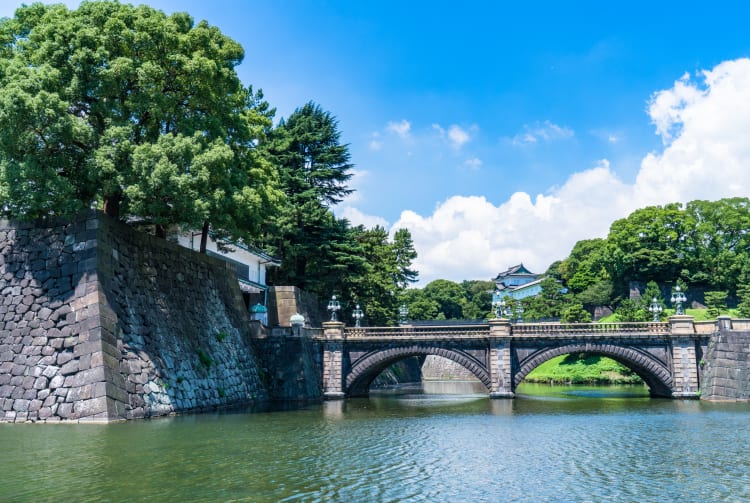
1-1 Chiyoda, Chiyoda-ku, Tokyo-to
- View on Google Maps
- Get Transit Info
Visit the home of Japan's Imperial family
Tucked away behind moats and thick stone walls, the residence and offices of the Emperor of Japan occupy an enviable spot in central Tokyo.
Quick Facts
The Imperial Palace moved to Tokyo in 1868
Tours of the palace run daily at 10 a.m. and 1:30 p.m, and take approximately 1 hour.
How to Get There
The palace is located in central Tokyo and is easily accessible from Nijubashimae Station or Otemachi Station.
Visitors who wish to see the entrance to the palace should head towards the Sakashita-mon Gate, which is a 15-minute walk from Nijubashimae Station or Otemachi Station. You can also walk there from Tokyo Station's Marunouchi exit in 20 minutes.
If you plan on joining the Imperial Palace tour, meet your guide at the Kikyomon Gate, a 10-minute walk from Nijubashimae Station or Otemachi Station.
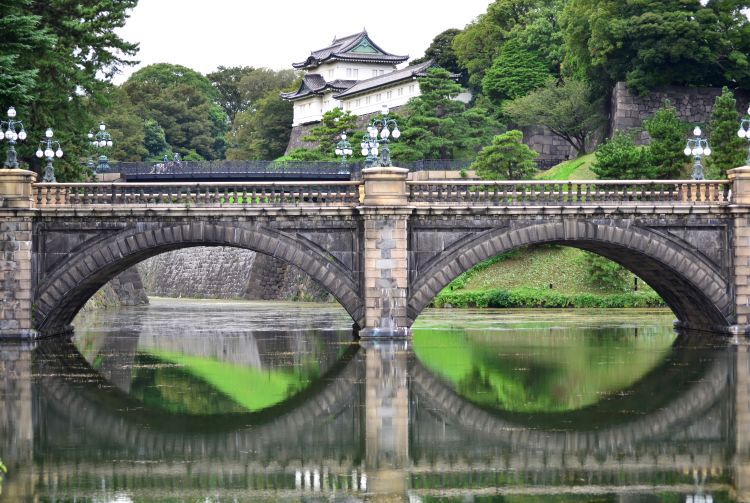
The center of the new capital
For around 1000 years Kyoto was the capital of Japan, but in 1868 both the capital and Imperial Palace were moved to Tokyo after the Meiji Restoration. This has been the home of the Emperor and his family ever since.
See beyond the gates
Arranging for a tour.
Tours run twice each day except on Sundays, Mondays and public holidays. Reservations are recommended, and can be made through the Imperial Household Agency's website (note: visits and advance applications have been temporarily suspended to prevent the spread of new coronavirus infection. Check the website for more information). Although the tours are usually offered in Japanese only, apps in six languages are also available. Highlights of the tour include the chance to see the Kyuden, or main palace, and the Fujimi-yagura watchtower.
Visit during the Imperial family's New Year's greeting
If you're planning a winter trip to Tokyo, be at the palace on January 2 for the New Year's greeting. On that special occasion, the palace gates are opened to visitors who can come in and marvel at the inner palace grounds and see the Imperial family greeting their subjects.
* The information on this page may be subject to change due to COVID-19.
Recommended for You

Please Choose Your Language
Browse the JNTO site in one of multiple languages

Complete Guide to the Tokyo Imperial Palace: Tour Reservations and the Best Ways to Enjoy Your Visit
The Emperor of Japan, one of the most revered symbols of Japan, resides in the Tokyo Imperial Palace. This is one of the tourist attractions with the largest number of visitors in the world. Built over 400 years ago, the Tokyo Imperial Palace is adorned with flowers all year round, with many natural and green spaces, and there are numerous sights to see within. All these are free for the public to view at their own pleasure, making it a great place to just drop by if you’re ever in the mood for a visit. We’ll walk you through some of these sights in the Tokyo Imperial Palace with photos!
Tokyo Imperial Palace is an oasis in the city
The statue of kusunoki masashige, with his undying loyalty for the emperor, the nijūbashi bridge, which leads to the inner palace, sakurada-mon: the largest existing gate to the tokyo imperial palace, ninomaru gardens, where you can enjoy nature to the fullest, the ruins of the donjon of edo castle, where you can see japan’s largest donjon, the inner palace, which you can visit if you make a reservation prior to visiting, book an unforgettable experience in tokyo.
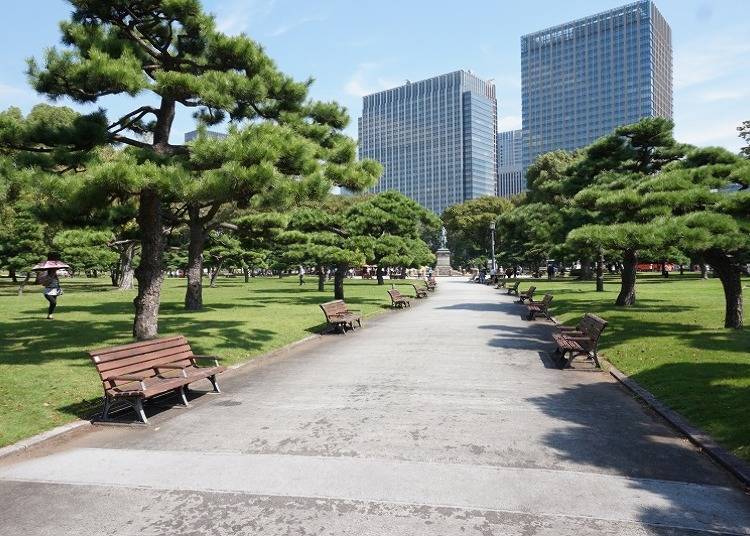
In the Tokyo Imperial Palace, there are three main areas that you can visit, the East Gardens and Outer Gardens , which you can visit for a stroll without any prior reservations, and the Inner Palace, which requires reservations. The palace grounds span approximately 230 hectares (568 acres). Just a 15-minute walk away from Tokyo Station , the vast expanse of greenery and natural landscapes makes it an oasis amidst the towering skyscrapers of the big city. Adorned with a forest of black pine trees and benches along the walking route, the Outer Gardens are an excellent place where you can take breaks while taking for a leisurely stroll. First, we’ll introduce the Outer Gardens , which you can visit for free.
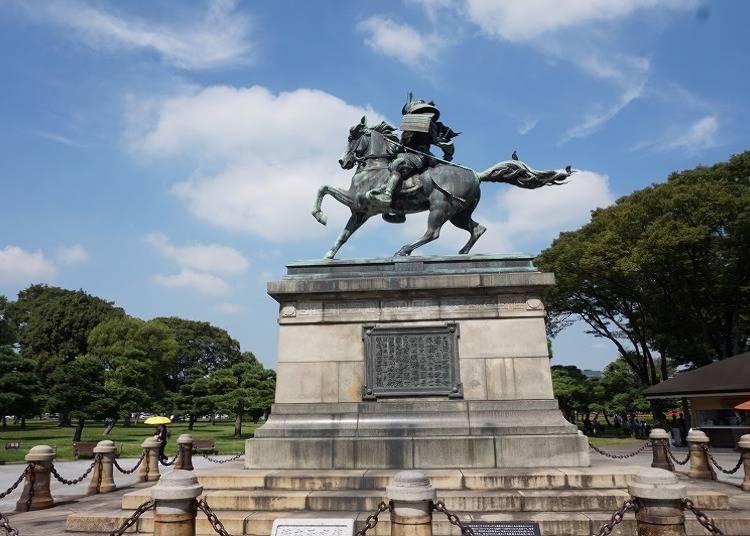
In 1900, the statue of Kusunoki Masashige was erected in the southeastern side of the Outer Palace, and is a popular photo spot, as one of the Three Great Copper Statues of Tokyo. The subject of the statue, Kusunoki Masashige, was a loyal samurai who served the 96th Emperor, Emperor Go-Daigo. He contributed immensely to overthrowing the Kamakura Shogunate, and is a beloved figure of the Japanese. As it is considered impolite for the face of the statue to face the imperial palace directly, one curious trait of the statue is that it faces the opposite direction of the Tokyo Imperial Palace. The lively horse that the figure sits upon is another draw of the statue, and regardless of which angle you look at it, the balance of the sculpture looks equally beautiful.
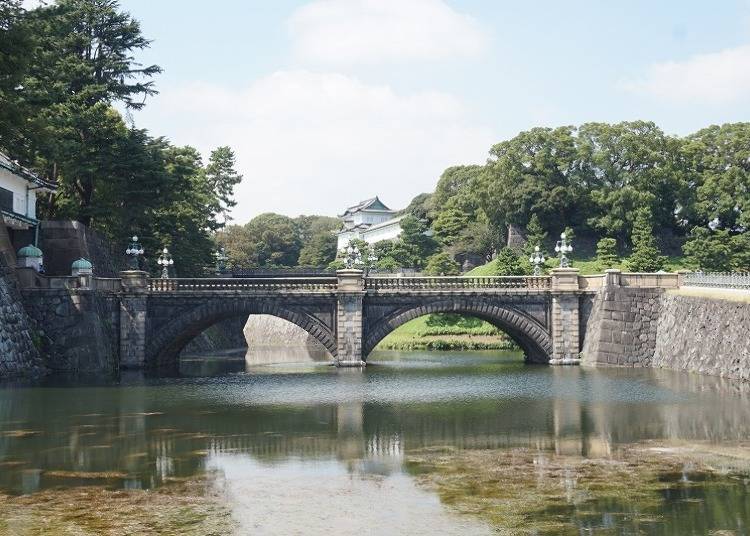
One of the bridges constructed to reach the Inner Palace from the square in front of the Tokyo Imperial Palace is Nijūbashi Bridge, which was constructed in 1614. Renovated in 1888, and once more in 1964, its shape changed to become what it is now. The beautiful castle which you see behind the bridge is Fushimi -yagura, which was moved over from Kyoto in 1628, and the sight of it paired with Nijūbashi Bridge makes for a lovely view. The bridge is usually closed to the public, and only open twice a year, on the Emperor’s birthday and on New Year’s Day, when the public is permitted to enter the Inner Palace, where the Emperor greets the masses.
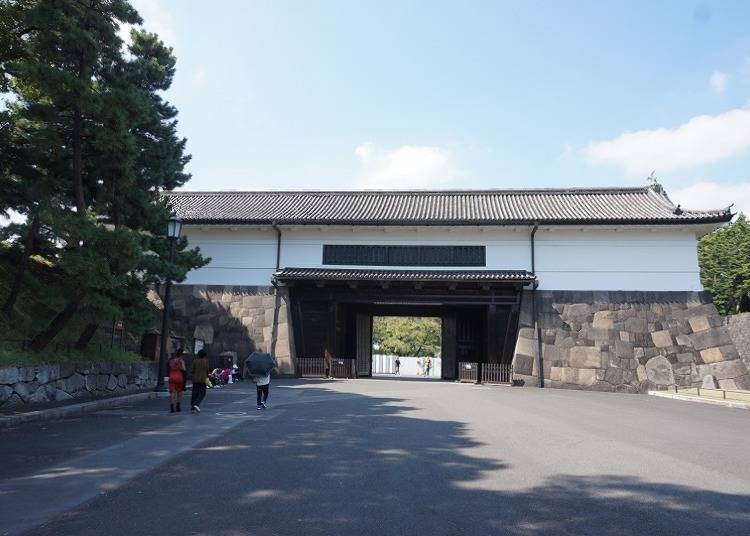
Built in 1612, the Sakurada-mon is the largest surviving gate to the Tokyo Imperial Palace. Destroyed in a fire during the Great Kanto Earthquake of 1923, it was reconstructed into the steel storehouse structure that stands today. The contrast of the finely shaped stone bottom with the white storehouse above is a beautiful sight, and is a popular photo spot for tourists. The double structure of the inner and outer gates allows for a gap in between the two, and it is a great place to see the streets of Tokyo from afar. From the Outer Gardens , we introduced the Kusunoki Masashige statue, the Nijūbashi Bridge, and the Sakurada-mon gate. Next, let’s check out the East Gardens .
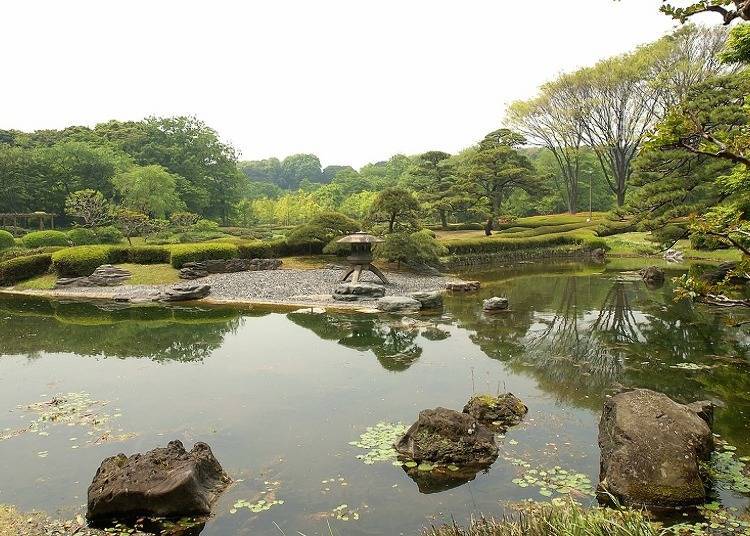
A garden with varied landscapes intended for walks and strolls, it was once the villa of shoguns. At approximately 20 hectares (49 acres), this large garden has plum blossoms in February, azaleas in April and May, irises in June, and maple in Autumn , and you can enjoy the changing scenery all throughout the year. The ponds in the garden are home to fish, turtles, and other small animals, and you can even see the Hirenaganishiki-goi, a breed of koi fish that is highly prized in Japan. Affectionately referred to as the Ninomaru Thicket for its forest -like atmosphere in the middle of the city, it’s a place where you can relax amidst nature .
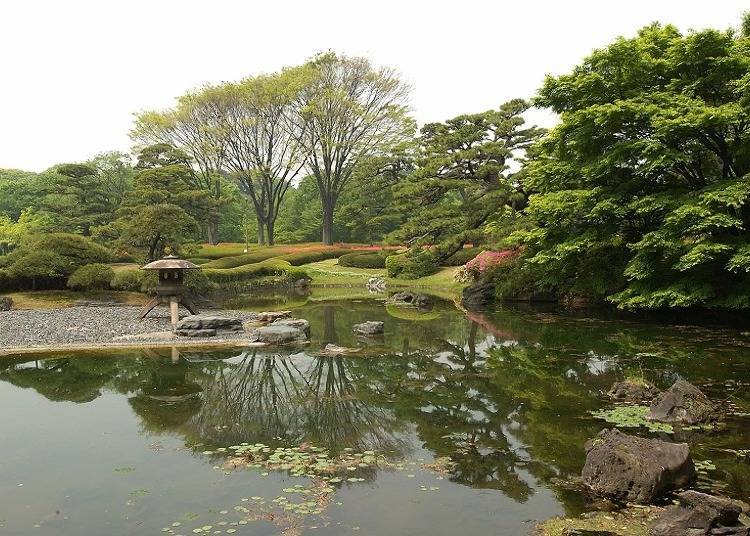
Previously where Edo Castle stood, all that’s left at the Ruins of the Donjon of Edo Castle is its stone foundation. Standing at 11 meters high and 40 meters across on each side, it is a breathtaking sight up close, as the largest donjon in Japan. Destroyed in the Great Fire of Meireki in 1657, all that’s left of the Edo Castle is the stone foundation, which still bears blackened areas and marks from the fire to this day. The area where the castle stood has become an observation deck instead, and a slope was constructed for easier access. From the top of the observation deck, you can catch a 360 degree panoramic view of the nature in the Imperial Palace surrounded by the towering skyscrapers of Tokyo.
If you make a reservation beforehand, it’s possible to tour the Inner Palace. Besides making reservations on the day itself, reservations can be made over the internet as well, and can be done in a variety of languages including English, French, Spanish, Chinese, and Korean, amongst others.
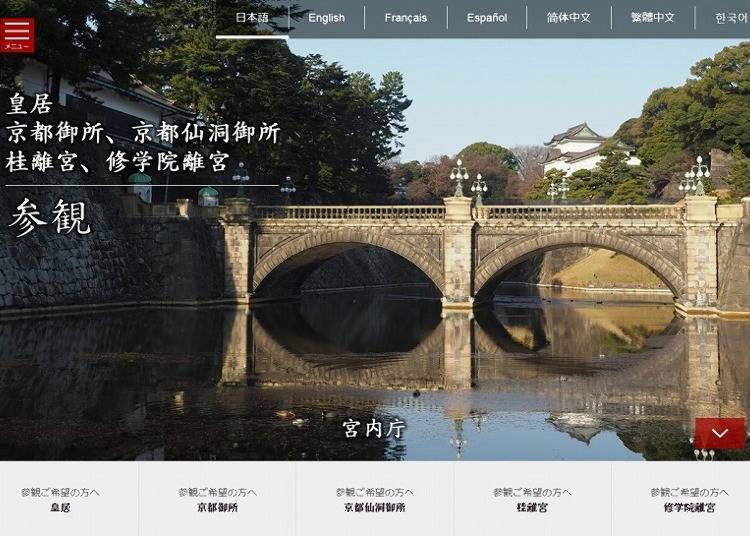
Tours of the Inner Palace happen twice a day, once in the morning at 10:00 a.m., and once in the afternoon at 1:30 p.m. Reservations for the following month can be made starting from the 1st of the previous month, but due to the immense popularity of the tour, it can be quite difficult to get a reservation several days before your visit. Instead, it’s recommended to make your booking as soon as reservations open, on the 1st of the previous month.
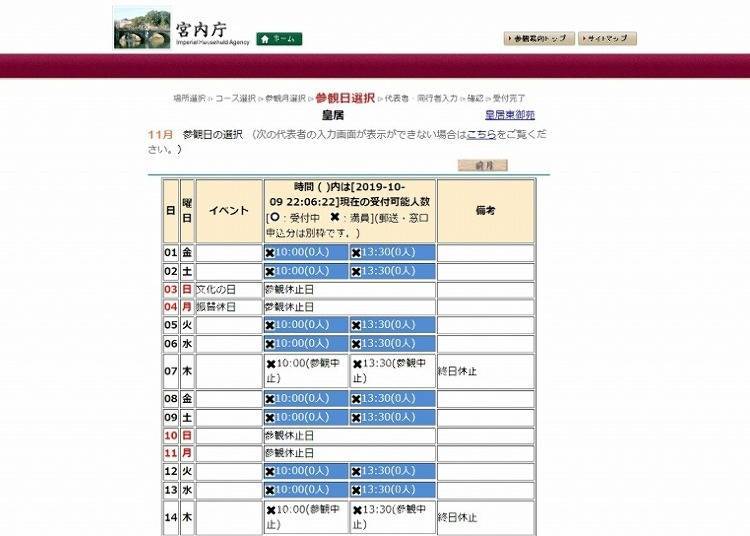
On top of this, personal identification documents such as your passport are needed for entry, so do remember to bring them on the day of your visit. There is a smartphone application, “Imperial Palaces Guide”, available for download. The application provides audio tours, and like the home page, is available in multiple languages, including English, French, Spanish, Chinese, and Korean. It’s recommended that you download the application before the tour itself, and on the day of the tour, you can request for an English speaking guide to bring you around too.
Within the Inner Palace, there are shops too, where you can buy rare souvenirs. From Japanese sake and sweets , to dishware and Japanese wrapping cloths, these souvenirs bear the motif of the chrysanthemum flower, which is the symbol of the Japanese Imperial family. With so many items that are only available for sale here, be sure to check out the souvenir shop . Do be aware that you’ll only have a chance to buy souvenirs before the tour starts, so take note! During the tour, you’ll get to see the Imperial Household Agency up close, which is a government agency responsible for handling matters related to the Imperial Family, as well as the Emperor’s residence within the Tokyo Imperial Palace. Do grab this chance to solemnly experience Japanese culture in this historic building. One of the draws of the Tokyo Imperial Palace is the different ways you can experience it, from a leisurely stroll through the East Gardens and Outer Gardens , to the tour of the Inner Palace where you can view the chambers of the Emperor himself. We introduced numerous places of interest within the Imperial Palace, and if you have opportunity, be sure to check them out!
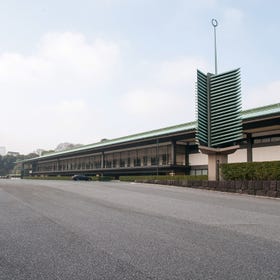
- Address 1-1, Chiyoda, Chiyoda-ku, Tokyo, 100-8111 View Map
- Nearest Station Nijubashimae "Marunouchi" Station (Tokyo Metro Chiyoda Line) 10 minutes on foot
- Phone Number 03-3213-1111
Make your trip extra memorable by booking one of these recommended tours.
- Area Tokyo Station
Share this article.
Limited time offer: 10% discount coupons available now!
Recommended places for you.
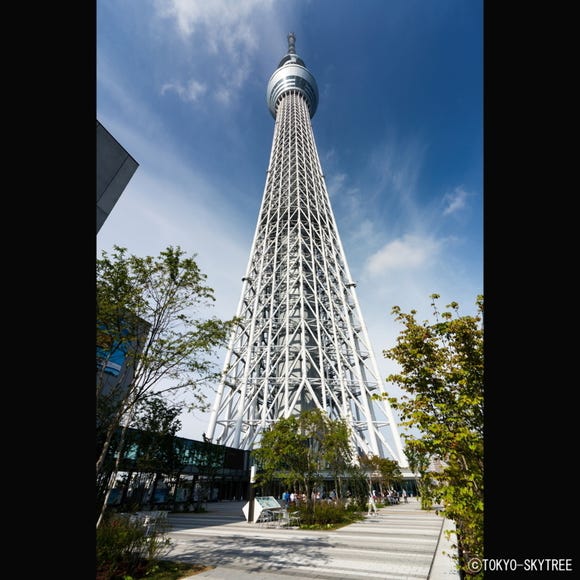
TOKYO SKYTREE®
Ryogoku / TOKYO SKYTREE(R)
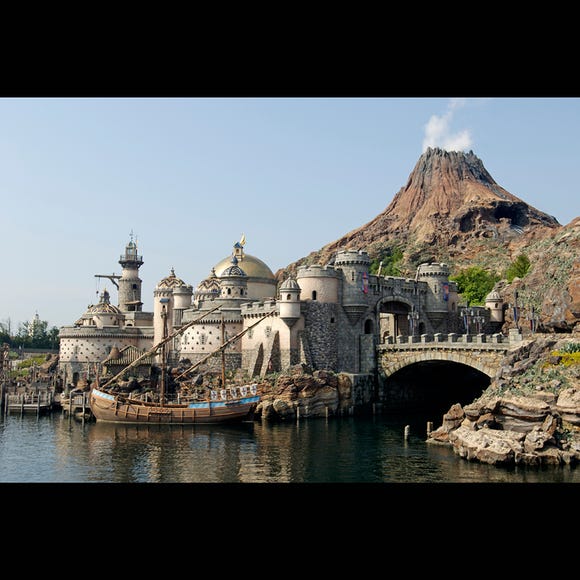
Tokyo Disney Sea®
Theme Parks
Chiba Suburbs

The Tokyo Station Marunouchi Building
Tokyo Station
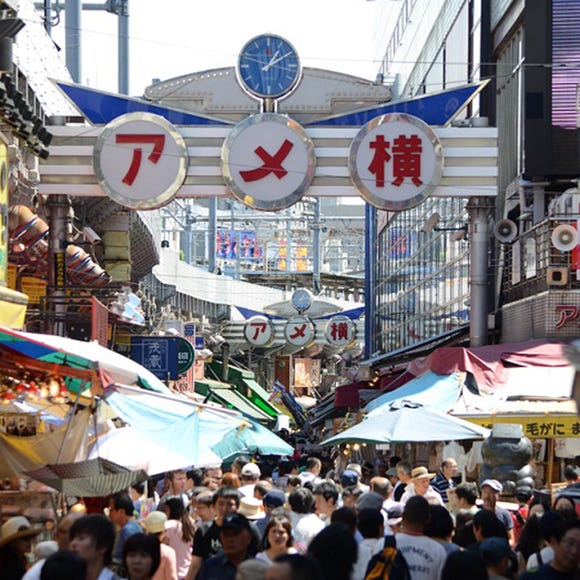
Ameyoko Shopping Street
Old Towns (Shitamachi)
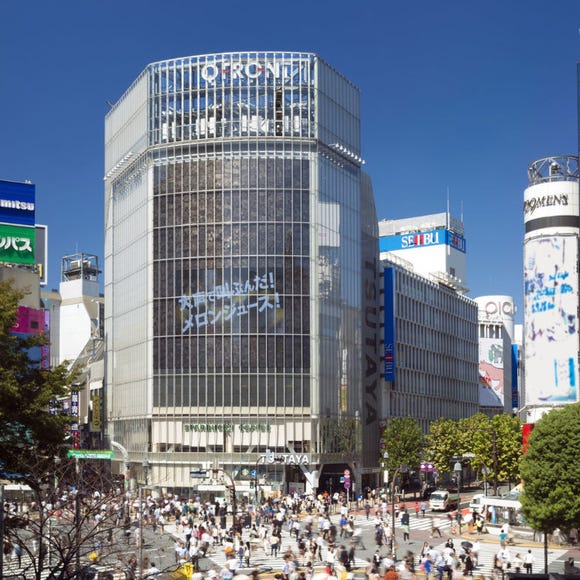
Shibuya Crossing
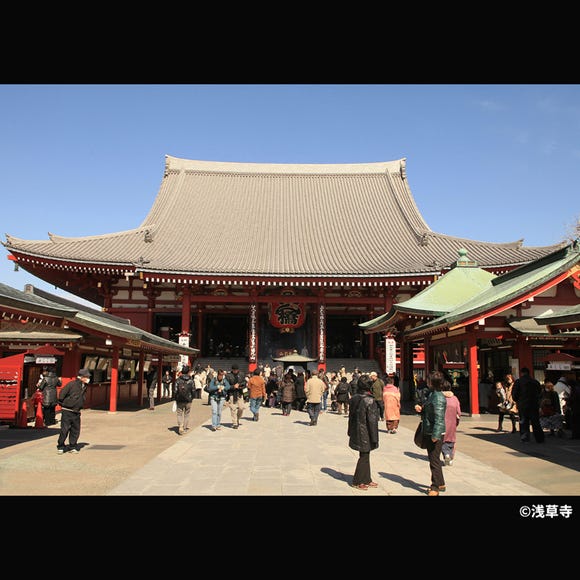
Senso-ji Temple

Everything You Need To Know About the Kyoto-Osaka Sightseeing Pass

Where to Eat in Yokohama: 10 Must-Try Restaurants for Yakiniku, Izakayas, Unique Dining & More

The Complete Guide to the Kintetsu Rail Pass

Best Things to Do in Tokyo in April 2024: Events, Festivals & More

The CASIO S100: How CASIO's Masterpiece Calculator Redefines Business Elegance With Japan-Made Reliability

15 Must-Try Restaurants in Ikebukuro: From Aged Yakiniku to All-You-Can-Eat Sushi, Plus Adorable Animal Cafés
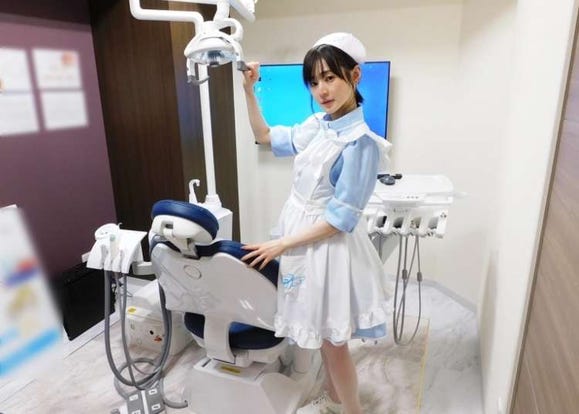
Akiba Dental Clinic: The Akihabara dentist where a moe maid in cosplay cleans your teeth
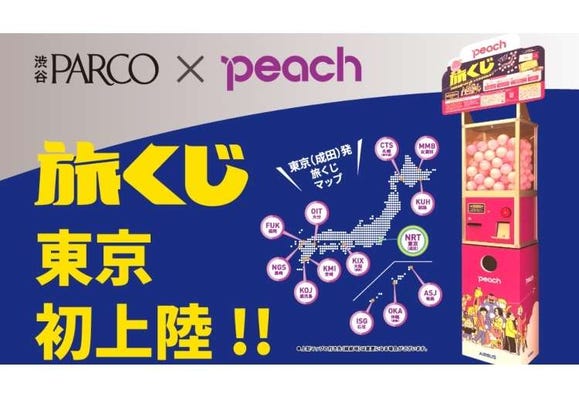
Get a Random Flight In Japan With This Wild Capsule Vending Travel Lottery
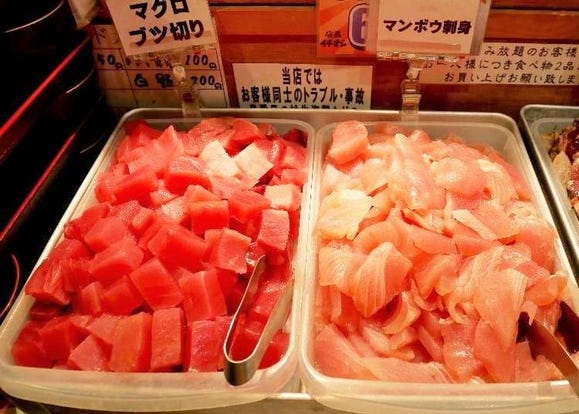
Numazuko Kaisho in Ueno: Good Quality, All-You-Can-Eat Seafood for Just US$12!?
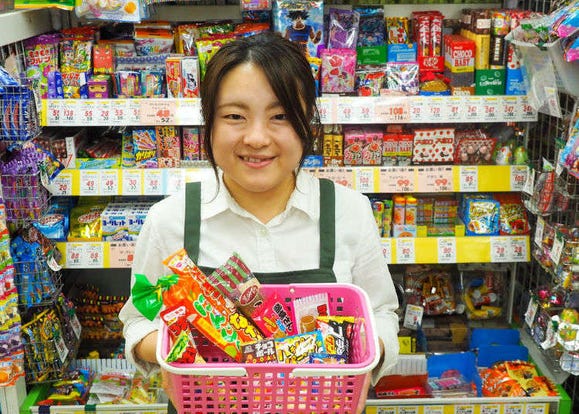
Tokyo Snack Souvenirs: Under $4 For a Whole Basket of Japanese Snacks?!
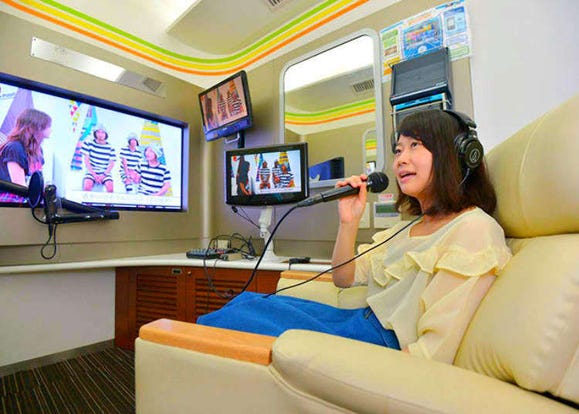
Spending Wonderful Time Alone in Shibuya - Free Cosmetics and a Hundred-Yen Bus!
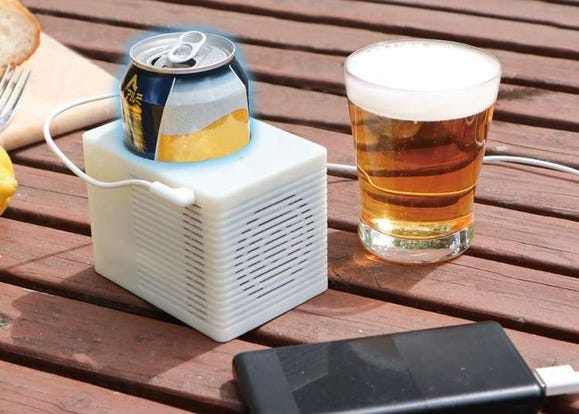
These 3 Japanese Lifestyle Gadgets Are Must-Buys For 2021!
- #best ramen tokyo
- #what to buy in ameyoko
- #what to bring to japan
- #new years in tokyo
- #best izakaya shinjuku
- #things to do tokyo
- #japanese nail trends
- #what to do in odaiba
- #onsen tattoo friendly tokyo
- #best sushi ginza
- #japanese convenience store snacks
- #best yakiniku shibuya
- #japanese fashion culture
- #best japanese soft drinks
- Tokyo Cheapo (繁體中文)
Tokyo Imperial Palace Mega Guide
Just ten minutes from Tokyo Station lies Tokyo Imperial Palace: a wealth of gardens and galleries, with guided tours and castle ruins.
Pro tip: Make the most of your visit to the area by joining this walking tour . Not only will you visit the Imperial Palace, but you’ll also get to taste some sake, try your hand at knife sharpening, and learn about traditional Japanese food like dashi (soup stock) and seaweed.
Like an island of respite, the Tokyo Imperial Palace is surrounded by parks and gardens offering a getaway from the busy city streets. Surrounding the home of the Emperor, the grounds are painstakingly maintained and are one of the top destinations for visitors to the capital.
Covering 1.3 square miles, the grounds include hanami (cherry blossom viewing) spots, art galleries, historical ruins and beautiful gardens—plus a private section reserved for royalty, of course. Once the site of Edo Castle, the land is now among the most highly valued in Japan, and is a short walk from Tokyo Station .
If you’re planning to visit, there are organized tours of inner areas available for free, as well as special days when you can see the Emperor himself—so read on and learn all you need to know about Tokyo Imperial Palace and the treasures it holds!
Pro tip: Book a private guided tour to get the most out of your visit to the Imperial Palace in Tokyo.
The History of Tokyo’s Imperial Palace

The current palace grounds were the site of Edo Castle, and before that, the residence of warrior Edo Shigetsugu. The land was close to Hibiya , which was then a beach, and was a strong flatlands location, strengthened by moats. Built in 1457 by Ota Dokan, Edo Castle (also known as Chiyoda Castle) was an important location in the development of Japan. During the Siege of Edo, it was taken over by the Hojo clan, and was later abandoned during the Siege of Odawara in 1590. The castle later became the base of Tokugawa Ieyasu and the Tokugawa Shogunate was formed there, with the castle becoming the military capital. Read more about the history of Tokyo . If you want some more of Edo-era Tokyo then heck out these old-school corners of Tokyo or these unusual theme parks in Japan .
Following the Meiji Restoration it became the Imperial Palace, with Emperor Meiji residing there until the new palace was built. Unfortunately, like many old Japanese structures, almost nothing remains of the original castle or ancient buildings today following fires, earthquakes and war damage—but a few small areas have survived. The Tenshudai (pictured above) is the foundation of the once-tallest tower in Japan, and can be found in the East Gardens.
Tokyo Imperial Palace grounds and gardens
Although the inner grounds are off-limits for the majority of the year, visitors are still able to explore the parks and gardens free of charge and without registration. The area is divided into three main sections: the East Gardens, Kitanomaru Koen Park and the Kokyo Gaien National Garden—all surrounded by a great jogging route for those who would like more than a stroll.
The East Gardens

Opened to the public in 1968, the East Gardens are located in the innermost circles of Edo Castle: the Honmaru and Ninomaru . The former was the principal complex where the rulers spent their daily lives, the latter was where meetings would take place with visiting feudal lords. The two areas combined form one of the last Edo Gardens to be preserved in Japan, and are filled with carefully-maintained seasonal flowers and trees. The Honmaru is a large lawn area and the Ninomaru a manicured garden, creating a great space for escaping the city and relaxing in much-needed nature.
The gardens also contain some of the few remnants of Edo Castle, including the moat walls, the entrance gate and some guardhouses. On the lawn of the Honmaru area you can see the imposing foundations (tenshudai) of the former castle tower, which was once the tallest castle tower in Japan. Unfortunately, it only stood for 19 years, as it was destroyed in a fire in 1657 and never rebuilt.
Pro tip: If you’re keen to know which flowers will be in season when you visit the Tokyo Imperial Palace gardens, check this handy (and very extensive) flower guide .
Opening hours
The East Gardens are closed on Mondays and Fridays, as well as from Dec 28th – Jan 3rd and on some special occasions. Otherwise, they are open from 9am to 4pm, with hours extended until 4:30pm between March 1st and April 14th, and until 5pm from April 15th – August 31st. Last entry is half an hour before closing. Entry is free, but you may be given a small entry token to return when you leave, so they can keep track of guests before closing.
Access: The East Gardens are easily accessible from Otemachi Station. Look for the Otemon Gate.
Kokyo Gaien National Garden

First opened to the public in 1949, Kokyo Gaien was previously part of the palace grounds and features the Nijubashi Bridge. The bridge was originally made with wood, and then an extra level was added, causing it to be nicknamed the “double bridge.” The area was once known as Nishinomarushita and was the location of the servants’ houses.
As well as the famous Nijubashi, you can see the Sakuradamon Gate, which is a cultural asset, and a bronze statue of samurai Masashige Kusunoki .
Slightly confusingly, the title of Kokyo National Garden is usually reserved for the section of gardens in front of the palace, but is also occasionally used to refer to the entire gardens complex, including the parks, so keep that in mind if you get confused (we’ve stuck to the specific garden use here).
Access: This area is best accessed by the Sakuradamon Gate (near Sakuradamon Station). Since it is a public park, access is free and unrestricted.
- Kitanomaru Park

A real green oasis, Kitanomaru Park was once a medicinal garden and is almost entirely surrounded by a moat, giving it a real escapist feel (aside from all the other people). There are two original Edo gates at the entrances: the Shimizumon Gate, which leads you to the Chiyoda ward office, and the Tayasumon Gate, which takes you to Kudanshita Station, and was built in 1685. The park was opened to the public in 1969 to commemorate the 60th birthday of Emperor Showa and is a mix of flowers and woodland—perfect for getting some shade in summer .
You can follow the Chidorigafuchi walking path, which includes a moat-side stretch with cherry-blossom in spring, without the risk of being run down by joggers. From April to November, you can rent paddle-boats on the moat, which is especially lovely when surrounded by pink blossom, and creates a pretty picturesque scene for onlookers too. The park is also home to the Science Museum, Nippon Budokan and the National Museum of Modern Art, but more on those below!
Access: This area is best accessed from the East Gardens or Takebashi, Kudanshita or Hanzomon stations. Since it is a public park, access is free and unrestricted.
Guided tours of Tokyo Imperial Palace

If you would like to get closer to the Tokyo Imperial Palace, you can join one of the official guided tours for access to some of the inner areas. They will take you to special spots including the Fujimi-yagura (Mt. Fuji-view Keep) and the Hasuikebori (Lotus Moat), as well as offer views of treasured spots like the Seimon Testubashi Bridge and the Fujimitamon Defence Gate. You will also get pretty close to the Imperial Palace itself, and can see the more modern additions to the royal grounds.
Tokyo Imperial Palace tours are free but require registration, either in advance online or on the day. Currently, only 120 guests are accepted each day (previously 500), with 70 spaces available for on-the-day registration (previously 300), with reccommendations to arrive early if you can.
The tours take place at 10am and 1:30pm and are conducted in Japanese and English, although headsets may be available in a few other languages. The tours take around 75 minutes and visit 11 different spots—starting from the Kikyomon Gate , which is also where you register.
If you’re a sporty-type, you might also enjoy this cycling tour of Tokyo . It takes you not only to the Imperial Palace, but also Meiji Jingū Shrine , Roppongi , and even as far as Ginza .
There are also private guided tours of the Tokyo Imperial Palace available.
Alternatives
Instead of a tour, you can download the free Imperial Palace audio guide app , if you’re the type who prefers to wander around. You can also find free guided tours that take in the palace and other Tokyo sights. Renting a bicycle and cycling around the special 3km palace course that’s open on Sundays is also a fun idea.
Bonus attractions at the Imperial Palace
As well as the gardens and guided tours, the green escape is home to a number of additional attractions that are well worth a side-visit during your stroll. These three are positioned up in the northern area of the gardens in Kitanomaru Park.
National Museum of Modern Art, Tokyo
Home to countless examples of Japanese and international modern art, this museum is a treasure trove for modern art lovers. There are excellent works in the permanent collection including photography by Walker Evans, abstract pieces by Willem de Kooning and works by Wassily Kandinsky. There is a focus on the effect of Western art on the Japanese scene and vice versa, and artists such as Yayoi Kusama and Ai Mitsu have pieces on display. The museum is also home to Japan’s National Film Center, which has a great collection, as well as regular screenings.
Hours: 10am – 5pm, 9pm on weekends | Closed Mondays | Free access on the first Sunday each month, otherwise entry is ¥ 500 for adults and ¥ 250 for students.
Nippon Budokan
Built to host the judo tournaments of the 1964 Olympics, the Budokan is a large sports arena that still hosts martial arts events as well as other sporting events. The national championships of judo, kendo, aikido and karate are still held here annually and can be a great opportunity to see traditional sports in action. If you like Japanese sports, then be sure to check out our guide to seeing sumo while you’re in town!
It has also become a popular music venue; the first music performance was the Beatles in 1966 and since then hundreds of performers have take to the stage, including Diana Ross, Prince, AKB48 and Morning Musume. The venue is still popular and is a great place to check out events while you’re in the area! Take into consideration though that if there is an event on the day you visit, you may want to avoid Kudanshita Station.
Science Museum
This museum is mainly for the kids and their adults, as it is a family-friendly educational mainstay that has been entertaining the Tokyo youth since 1964. It is a bit of an “all-in-one” museum and includes displays on computer technology, transport, space, the future, life sciences and more.
Hours: 9:30am – 4:50pm (last entry 4pm) | Closed Wednesdays (check their website for exceptions) | Entry is ¥ 950 for adults and ¥ 500 – ¥ 600 for children, free for those under 3.
Special dates at Tokyo’s Imperial Palace: Seeing the Emperor
They may be few, but they are not far between: the three special entry days for the Imperial Palace all take place in winter, from the 1st of December to the 23rd of February. Offering glimpses of the palace and even of the Emperor himself, these days are incredibly busy due to their rarity, so be prepared for crowds and queues!
Note: Currently, you have to pre-register for these events.

January 2nd – New Year Greeting
This is a rare chance to see the Imperial Family as the Emperor, Empress, and family appear on the balcony of the Chowaden Hall to greet well-wishers. The event is hugely popular, and crowds are immense, so be prepared. There are five appearances , with the first two including the adult family members and the remaining three including the younger members too. The times are: 10:10am, 11am, 11:50am, 1:30pm and 2:20pm. You can enter the grounds at the main gate from 9:30am until 2:10pm but it is advisable to arrive early. More information .
February 23rd – The (new) Emperor’s Birthday
To celebrate his birthday, the Emperor and his family are expected to continue tradition and make three appearances from the balcony of the Chowaden Hall. The day is also a national holiday, so it is a whole new level of busy. In the afternoon, a guestbook is opened to all visitors, and tents are set up allowing everyone to write a message to the Emperor. From 12:30pm to 3:30pm, the book is in front of the Imperial Household. The appearance times are 10:20am, 11am, 11:40am, and you can enter the grounds from 9:30am until 11:20am at the main gate. Note that the East Gardens are closed on this day, but visitors can exit through them. More information .
December 1st-9th – Visit of the General Public to Inui Street
Between 9am and 3pm on these days, you can walk straight through the palace grounds from the Sakashitamon Gate to the Inuimon Gate. This route will mean you have the Fukiage Gardens and Imperial Residence on your left, and the East Gardens to your right, with a good portion of the walk following the Hasuikebori moat. More information .
Rules and considerations
The process for seeing the Emperor and Imperial Family is relatively straightforward. Nearby stations are flooded with well-wishers being directed by police, so just follow the crowds to the main palace gate (Nijubashi), which opens at 9:30am and is only entrance open that day. Once you reach the gate, there is a brief security check before you are handed a small Japanese flag made of paper and sent off on a brief walk to Chowaden Reception Hall. The Emperor and his family appear in a glass-enclosed viewing gallery above the crowd as everyone cheers and waves their flags wildly. The Emperor gives a brief speech, and then the crowd is shuffled in the direction of well-marked exits.

Getting to the Tokyo Imperial Palace
If you’re heading straight over from Tokyo Station , it’s a simple 10-minute walk from the Marunouchi Central Exit (not Yaesu), heading out onto Gyoko-dori and heading straight down to the Wadakura-mon Gate.
If you’re wanting to register for a palace tour, you need to head to the Kikyomon gate, which is a 10-minute walk from Nijubashimae Station or Otemachi Station via the Otemon Gate, or 15 minutes from Tokyo Station.
For the northern area, you can head to Kudanshita Station for the Nippon Budokan and Science Museum or Takebashi Station for the National Museum of Modern Art.
Imperial FAQ: All Your Questions Answered
There’s a lot of information about the palace, so if you’re looking to have your simple questions simply answered, then look no further.
How old is the Tokyo Imperial Palace?
Technically the Imperial Palace buildings are all modern, but the use of the site as a castle is over 550 years old.
When was the Tokyo Imperial Palace Built?
While the current buildings are a modern creation, the site was home to the Edo Castle, built in 1457. The castle changed hands and was destroyed and rebuilt over the centuries, becoming the Imperial Palace after the Meiji Restoration in 1868.
What is inside Tokyo Imperial Palace?
There are outer grounds which are open to exploration with museums and gardens, inner gardens which are only open on specific days, and the palace itself, which is never open to the public.
Who Lives in Tokyo Imperial Palace?
Emperor Naruhito lives in the Imperial Palace with his wife Empress Masako and his only child, Princess Aiko. He is the 126th monarch of Japan and took over when his father Emperor Akihito abdicated in 2019.
Can you go Inside Tokyo Imperial Palace?
While some of the grounds and gardens are open daily, the inner section is only open on certain days (see above) and the actual building is never open to the public.
Keen on Exploring Other Historical Sites? See our guide to the best castles in and around Tokyo . Also read about the Kyoto Imperial Palace .
While we do our best to ensure it’s correct, information is subject to change. Post first published in January, 2018. Last updated May, 2022.
- Imperial Palace
- Nippon Budōkan
- Imperial Palace Gardens
- Tokyo Station
- National Museum of Modern Art
- Cherry blossoms
- Family friendly
- Imperial palace
- Sightseeing
- Walking Tour
Get our Tokyo Cheapo Hacks direct to your inbox

How and Where to Buy Shinkansen Tickets

Top Things to do in Odaiba: Gundam, Museums & Tokyo Bay

Luggage Storage In Tokyo

Hakone Day Trip from Tokyo

Hidden Gems: Tokyo's BEST Underrated Shrines and Gardens

Top Japanese Phrases You Need Before Traveling to Japan

Renting a Pocket Wifi Router in Japan: The Best Options

New Video! Hidden Gems: Tokyo's Most Underrated Shrines and Gardens
Tokyo is often described as busy, crowded and futuristic, but there are also traditional shrines and gardens where you can swap the hustle and bustle of the city for peace and quiet.

3 Hidden Sound, Art and Poetry Experiences in Tokyo
A different way to tune into the city.

Where To See Yaezakura: Late-Blooming Cherry Trees in Tokyo
8 perfect picks, from parks to shopping streets.

New Video: Top 20 Things to Do in Shinjuku
You'll need more than a day — there are LOTS of things to try!

6 Spectacular Spring Flower Festivals Around Tokyo
Move over, cherry blossoms! These other blooms will take your breath away well into late spring.

English-Speaking Hospitals in Tokyo — And How To Visit Them
Absolutely everything you need to know about seeing a doctor in Japan.

Yozakura: 8 Best Nighttime Cherry Blossom Illuminations in Tokyo
Light-ups have been extended, since the blossoms were so late this year.

Updated Forecast: 2024 Tokyo Cherry Blossom Dates
They've been teasing us — but looks like they're about to bloom, at last.

April 2024: 5 Events Not To Miss in Tokyo
A chance to see the infamous "penis festival", puppies, processions, and more!

Mega Guide: 24 Best Places to See Cherry Blossoms in Tokyo
Choose from parks, traditional gardens, mountains and more.

Spring Escapes: Top 7 Day Trips from Tokyo
Must-see cherry blossom, moss phlox, and wisteria locations — all easily accessible from Tokyo.

Ashi Angels: Hakone for Evangelion Fans
Explore the real Tokyo-3.

Recommended hotels located nearby

Close without accepting

Tokyo Imperial Palace
The emperor’s residence and gardens.
Tokyo Imperial Palace is in Chiyoda ward, right at the center of the Japanese capital. The compound is surrounded by its original moats and is known to shelter Kokyo, the Emperor’s current residence, as well as several parks, some of which opened to the public.
It is quite a rare treat for visitors of Japan to be able to visit Tokyo ’s Imperial Palace as it can only be explored thoroughly under certain conditions.
Tour of the grounds available throughout the year
For the man on the street, the standard tour around the Imperial Palace includes the two adjoining parks:
- The East Gardens (東御苑 Higashi-gyoen) which cover a surface area of 21 hectares and can be accessed from the Kitanomaru Park ;
- The Outer Grounds (皇居外苑 Kokyo-gaien) a bit lower down, whose entrance gate is located just outside the Marunouchi district, only a few dozen meters from Tokyo station.
The Imperial Palace grounds are located in the heart of the city and therefore surrounded by skyscrapers. They are protected by moats and more or less well-preserved walls. This is indeed all that remains of the famous Edo Castle 🏯 , which was the residence of the shoguns (lords) in the Tokugawa period. By the way, the moats that had not been cleaned since 1965 have been benefiting from a new sewage system since the end of 2015.
At the beginning of the eponymous era, Emperor Meiji ordered that the capital be transferred from Kyoto to Tokyo where the Imperial Family set up their quarters from then on. The estate subsequently suffered the vicissitudes of History: it was destroyed by fire 🔥 a few years later in 1873, rebuilt in 1888, razed to the ground during WW2 and finally rebuilt in 1968.
Nowadays, runners circle (counterclockwise) around the Palace’s grounds that provide a 5-kilometers course between buildings and nature.
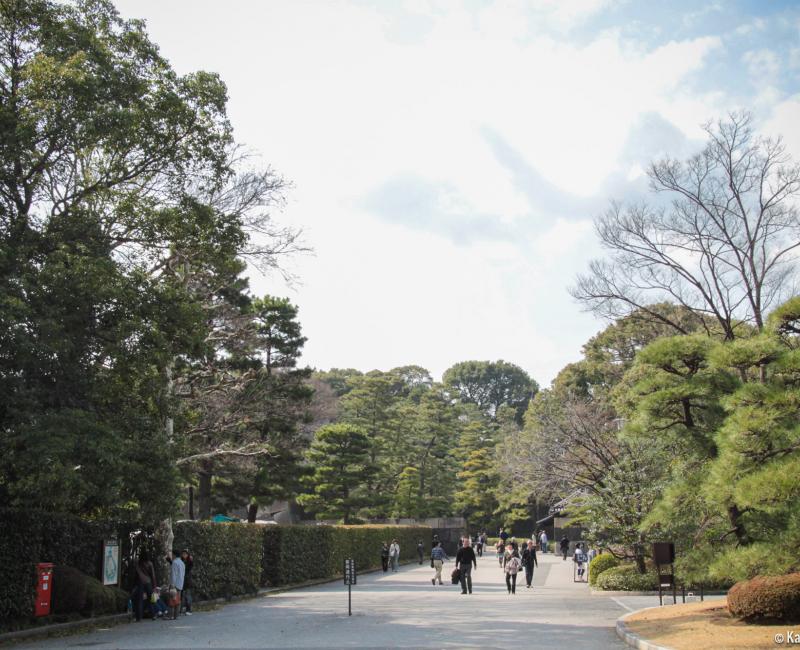
Guided tour of the inner grounds
Visitors are not allowed independent access beyond the Palace gateway, marked by the Nijubashi bridge, but it is possible to book a guided tour, exclusively organized by the staff of the Imperial Household Agency .
To do so, visit the official website and fill in the online form: you will be asked to select one of two daily time slots (10 a.m. or 1.30 p.m.). You may book your tour from 30 to 4 days prior to the desired date.
-- Update : Since 2016, June 25, the number of participants per group for the guided tour was raised from 300 to 500, with 300 reservation slots available on the same day.
The visit lasts about 1h15 minutes and is entirely conducted in Japanese (audio-guides in English are nevertheless available) and sticks to the outdoor parts of the estate: you will not be allowed to enter any of the buildings.
Since 2014, Inui-dori, an alley in the south-east is opened to the public during about one week each spring , usually around late March , to contemplate the 75 sakura 🌸 cherry trees blooming on the 600-meters long path. Inui-dori is also opened in autumn 🍁 to watch its maple trees redden at the beginning of December .
Attend the Imperial Family’s greetings
Visiting the inner grounds may moreover hold a major surprise, a treat scheduled only twice a year:
- On January 2nd, the day when the Emperor offers his New Year ’s greetings .
- On February 23rd, the day of Emperor Naruhito’s birthday .
The New Year Greetings tradition is to resume on 2023 , January 2, after 2 years of interruption since 2020 due to the Covid 🦠 pandemic. Advance online registration (before November 18) is required and only 9,000 visitors will be allowed, compared to nearly 70,000 normally.
On both occasions, you had better muster all your patience as people (mainly Japanese) come in great numbers. They form a compact waiting line that stretches out endlessly and inches slowly forward throughout the day until they catch a glimpse of the Imperial Family offering greetings from the vantage point of a balcony protected by bullet-proof glass.
This is actually the closest you will ever get to the private residence of the Emperor and his family.
- Flights and Airports
- Accommodation
- Transportation
- Internet & Phones
- Budget and money
- Japanese Food
- Visit with Kids
- Seasons: spring / summer / autumn / winter
- Weather forecast
- Time in Japan
- Holidays & Festivals
- Natural Disasters
- Customs and Duties
- Works and Closures
- From April 29 to 5 May -- Japanese Golden Week
- May 12 -- Mother's Day in Japan
- June 6 -- Beginning of the rainy season (Tsuyu) in Japan
- June 21 -- Summer starts in Japan
- From July 1 to 31 -- Gion Matsuri Festival in Kyoto with float processions on July 17 and 24
- July 1 -- Season start for climbing Mount Fuji
- Tokyo : Shinjuku , Shibuya , Harajuku , Asakusa , Akihabara , Odaiba , Ikebukuro , Ueno , Roppongi , Chiyoda , Ryogoku ...
- Around Tokyo: Kamakura , Nikko , Hakone , Mount Fuji , Mount Takao , Yokohama ...
- Kansai: Kyoto , Nara , Osaka , Mount Koya , Himeji , Kobe , Kinosaki , Kumano Kodo , Ise ...
- Japanese Alps: Kanazawa , Matsumoto , Takayama , Shirakawa-go , Nakasendo ...
- West: Hiroshima , Miyajima , Shikoku , Onomichi , Naoshima , Izumo , Kurashiki , Matsue ...
- South: Kyushu , Okinawa , Yakushima ...
- North: Hokkaido , Tohoku ...

- Temples and Shrines
- Gardens and Parks
- Hiking and Trekking
- Observation Decks
- Public Baths (Onsen and Sento)
- Festivals (Matsuri)
- Amusement Parks
- Visit on a Budget / Luxury

Keikaku is a travel agency specialist of Japan and providing different kind of services:
- Japan Rail Pass
- English speaking Guides
- Pocket Wi-fi
- Japan Nightlife
- Working in Japan
- Religion and Spirituality
- Arts and History
- Movies / Animated Movies
- Japanese Music
- Studio Ghibli
- Photos / Videos
- Weird Japan
- Translations
- Kana & Kanji
- Japanese Swear Words
- Honorific Suffixes (san, kun, chan...)
- Introducing yourself
- Thank you / Apologize
- Count / Say Your Age
- Say the Date / Tell the Time
- Happy birthday
- Enjoy Your Meal
- Writing your name

Kanas are the much-needed basic characters of written Japanese language. Memorize them at a fast pace with our method.

Ask any kind of question and share your knowledge about Japan in Kanpai’s community space, our Q&A section Kotaete.

Isshoni means "together" in Japanese: share your trip details (dates, places you would like to visit) and find companions to travel in Japan.

Create your Kanpai account to manage your profile and view your participation history (questions, answers).
- Top Destinations
- Mexico City, Mexico
- Tokyo, Japan
- Paris, France
- Rome, Italy
- London, United Kingdom
- All Destinations
- Upcoming Experiences
- Walking Tours
- Small-Group Tours
- Tours for Kids
- Museum Tours
- Food, Wine and Market Tours
- Newly Added Tours
- Audio Guides
- Pre-Trip Lectures
- Admin Dashboard
- My Favorites
- Cookies Preferences
- Client Orders
- Monthly Commissions
- My Advisor Profile
- Advisor Toolkit
- Guide Dashboard
Credit Balance
Transactions are based on current exchange rates and performed in USD. There maybe slight variations in the price estimates.
Introduction to Tokyo Tour, with Imperial Palace Gardens and Nihonbashi

- Imperial Palace Gardens
- Tokyo Station
- Nihonbashi Bridge
- Nihonbashi Mitsukoshi
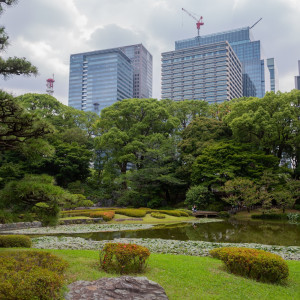
- Dive into Tokyo's captivating journey from a small village to a bustling city, exploring landmark areas with the insights of a local guide.
- This tour lays the perfect groundwork for your Japan trip, offering a comprehensive understanding of Tokyo's history and culture.

- It’s your first time in Tokyo and you want to learn more about the history of the city
- If you're traveling with children under the age of 12, we recommend our family-oriented Tokyo Pop Culture Tour for Kids
- Imperial Palace Gardens - the gardens surrounding the Imperial Palace and former site of the Edo Castle’s circles of defense
- Tokyo Station - the city’s busiest station in terms of trains passing through daily
- Nihonbashi Bridge - a modern reconstruction of the 17th-century bridge that played a vital role in Edo-Kyoto trade
- Nihonbashi Mitsukoshi - Japan’s oldest department store, which can trace its history back to the 17th century
- There will be a break in the tour to stop and use bathroom facilities as well as opportunities to stop and rest along the way if needed. Please communicate any mobility needs or concerns with our team at the time of booking.
- If you are looking to learn more about Tokyo prior to a visit, check out our online lectures at Context Learning .
- The Imperial Palace Gardens are partially wheelchair accessible - some paths are a little steep and some are covered in gravel, but most are usable.
Reviews can only be left by Context customers after they have completed a tour. For more information about our reviews, please see our FAQ .
You May Also Like
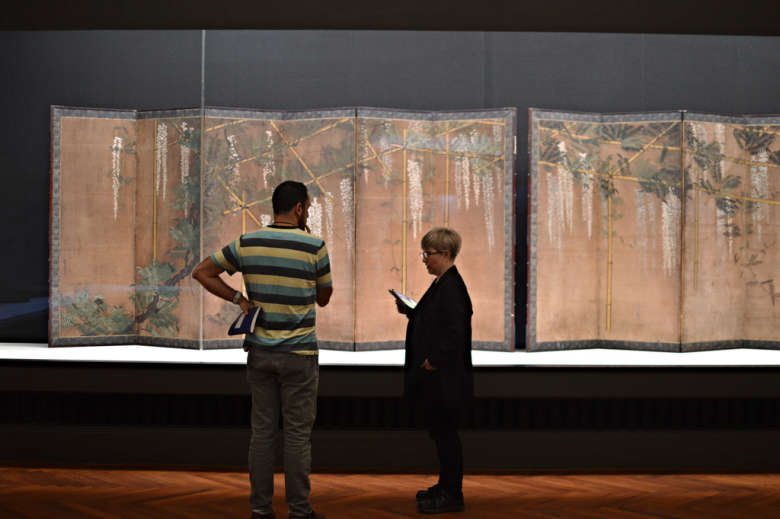
Tokyo National Museum Tour: A Guided Crash Course

Tokyo Akihabara Tour: Anime & Manga
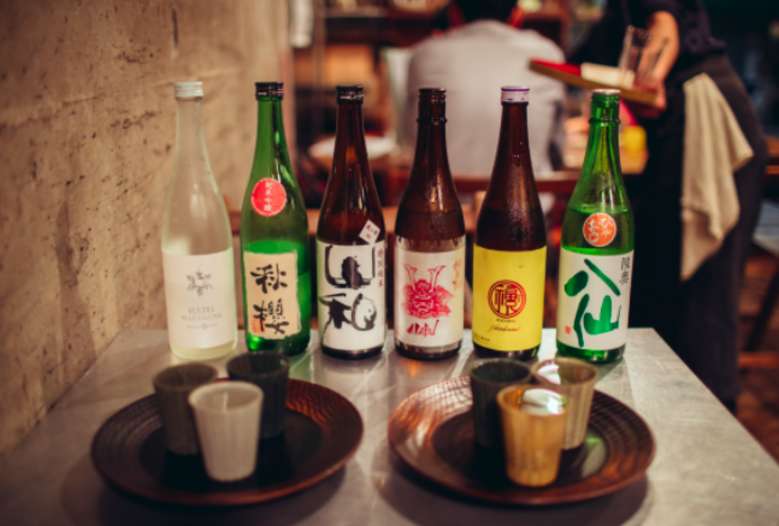
Tokyo Evening Sake Tasting Tour
Book a tour.
- Our Experts
- Working with Context
- View All Cities
- Sustainable Tourism
- Refer a Friend for $50
- Travel Updates
- Advisor Login
- Expert Portal
Subscribe to our Newsletter
- Privacy Statement & Security
- Cancellation Policy
Tokyo Imperial Palace: Everything You Need to Know

The Tokyo Imperial Palace, an iconic symbol of Japanese history and culture , stands as a serene oasis amidst the bustling cityscape of Japan's capital. Home to the Emperor of Japan, this vast complex is not only a place of residence but also an important site for state occasions and royal ceremonies. With its stunning gardens, ancient ruins, and sumptuous architectural designs, the Palace offers visitors a glimpse into the country's rich and fascinating past.
Although the present-day palace was built in 1968, the history of the site dates back to the 15th century when it was the location of Edo Castle, the seat of power for the Tokugawa shogunate . Today, the Tokyo Imperial Palace encompasses a large park area surrounded by moats and massive stone walls in the center of Tokyo, close to Tokyo Station. It is a remarkable fusion of traditional Japanese architecture and contemporary design , embodying the spirit of harmony that is so integral to Japanese culture.
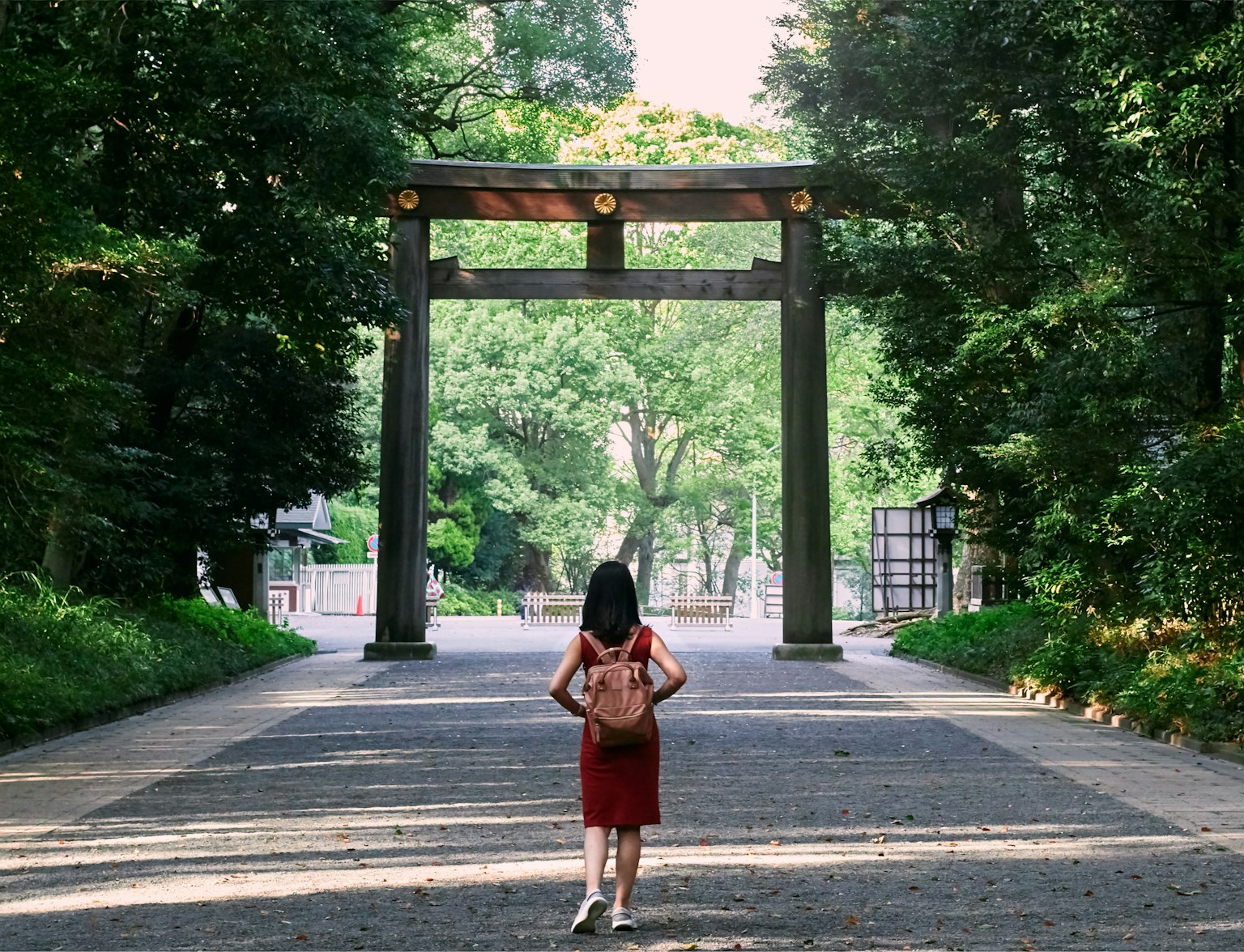
Discover the vibrant city of Tokyo in all its glory with our private tour. Marvel at the breathtaking view of the city from the Tocho observatory, explore the tranquil Meiji Shrine, indulge in luxury shopping at Omotesando, explore the East Garden of the Imperial Palace, and immerse yourself in the bustling atmosphere of Akihabara.
The Rich History of Tokyo Imperial Palace
The Tokyo Imperial Palace, the official residence of Japan's Imperial family since 1868, stands on historic grounds that once housed the Edo Castle, built in 1457. The castle, which was the largest fortress in the world during its prime, changed hands numerous times and underwent several transformations before being converted into the Imperial Palace.
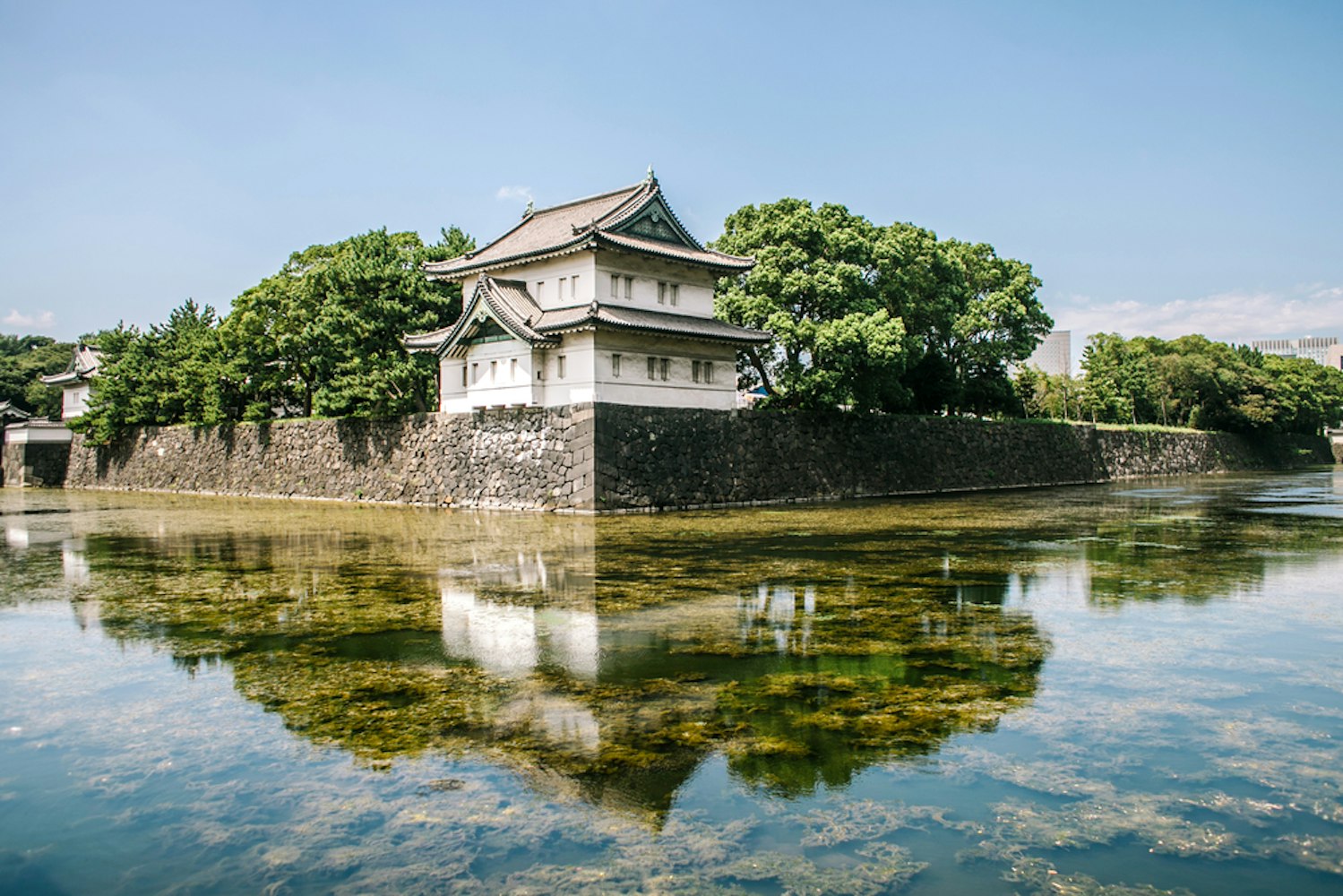
In 1888, a new palace was constructed, only to be destroyed during World War Two and later rebuilt in the same style. The modern residence, designed by the renowned Japanese architect Shōzō Uchii, was completed in 1993. Despite the changes over centuries, the Imperial Palace remains a symbol of Japan's imperial lineage and cultural heritage.
The Stunning Architecture of Tokyo Imperial Palace
The architecture of the Tokyo Imperial Palace is a captivating blend of traditional Japanese style and modern design elements. The current palace, completed in 1968 and coming into use in 1969, features a large roof, pillars, and beams, reflecting the grandeur and elegance of Japanese architectural aesthetics.
A notable feature of the palace is Matsu-no-tou, a lightning tower built on donations from the Japanese people at the time the Imperial Palace was constructed. This tower not only serves a practical purpose but also adds a unique touch to the palace's overall architectural design. The palace is located on the former site of Edo Castle, surrounded by moats and massive stone walls, further enhancing its majestic presence.
Inside the Tokyo Imperial Palace
The Tokyo Imperial Palace serves as the main residence of the Emperor of Japan and houses several key areas within its complex. Among these are the Imperial Residence, where the Emperor and Empress reside, and the main palace used for various ceremonies such as the New Year's greeting and the Ceremony of the Presentation of Credentials. The palace is surrounded by wide moats and thick stone walls, a testament to its history as the site of the Edo Castle before 1868.
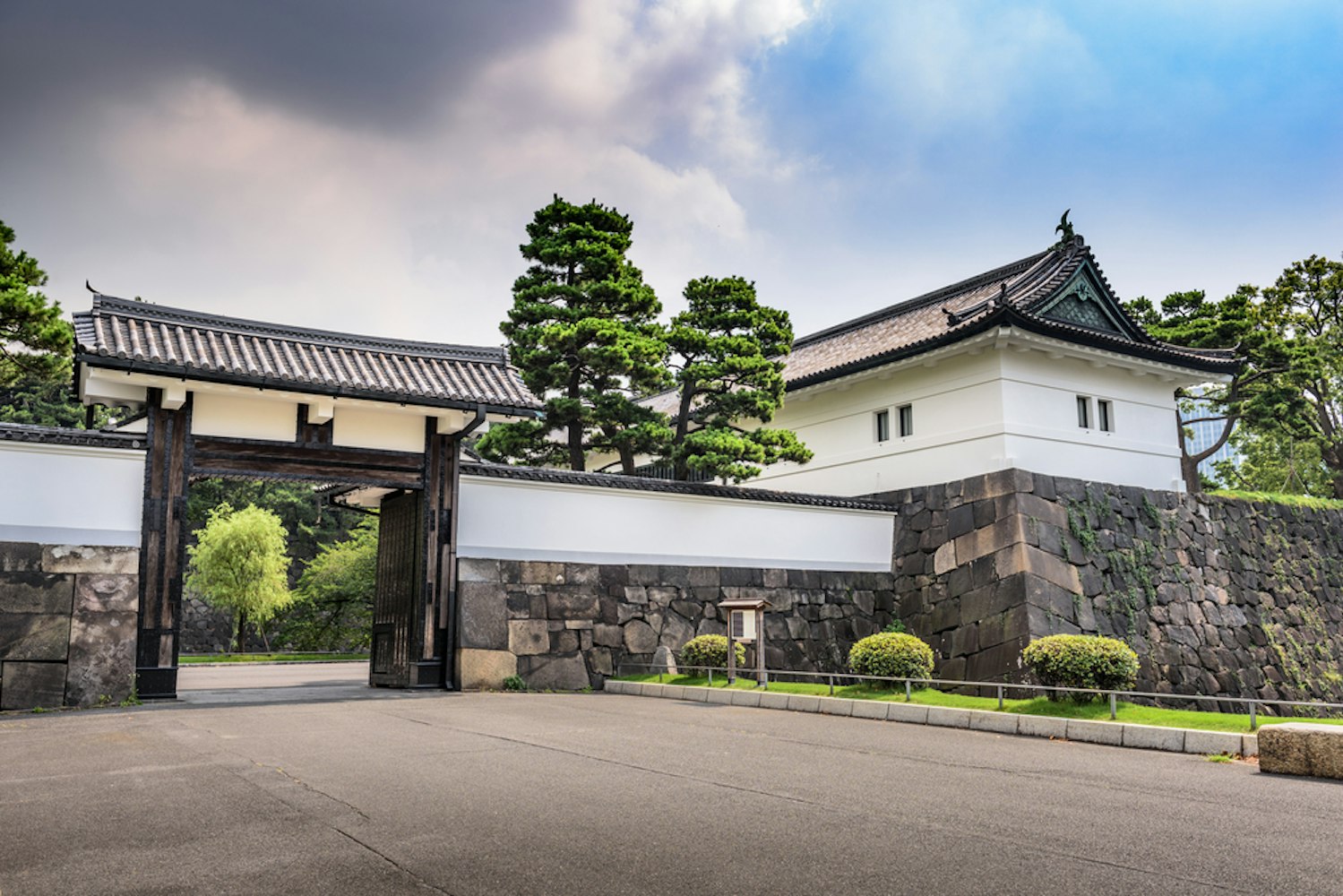
Another significant area is the Kikyomon Gate, where the guided tours meet for their 75-minute exploration of the palace grounds. While these tours don't take visitors inside the palace buildings, they provide an opportunity to appreciate the architectural grandeur and historical significance of the palace.
Artifacts and Treasures of the Palace
While public access to the inner palace grounds is limited, the treasures and artifacts of the imperial family can be admired at the nearby museums. The National Museum and the Science Museum , both a short walk from the palace, and house collections that offer insights into Japan's rich cultural heritage.
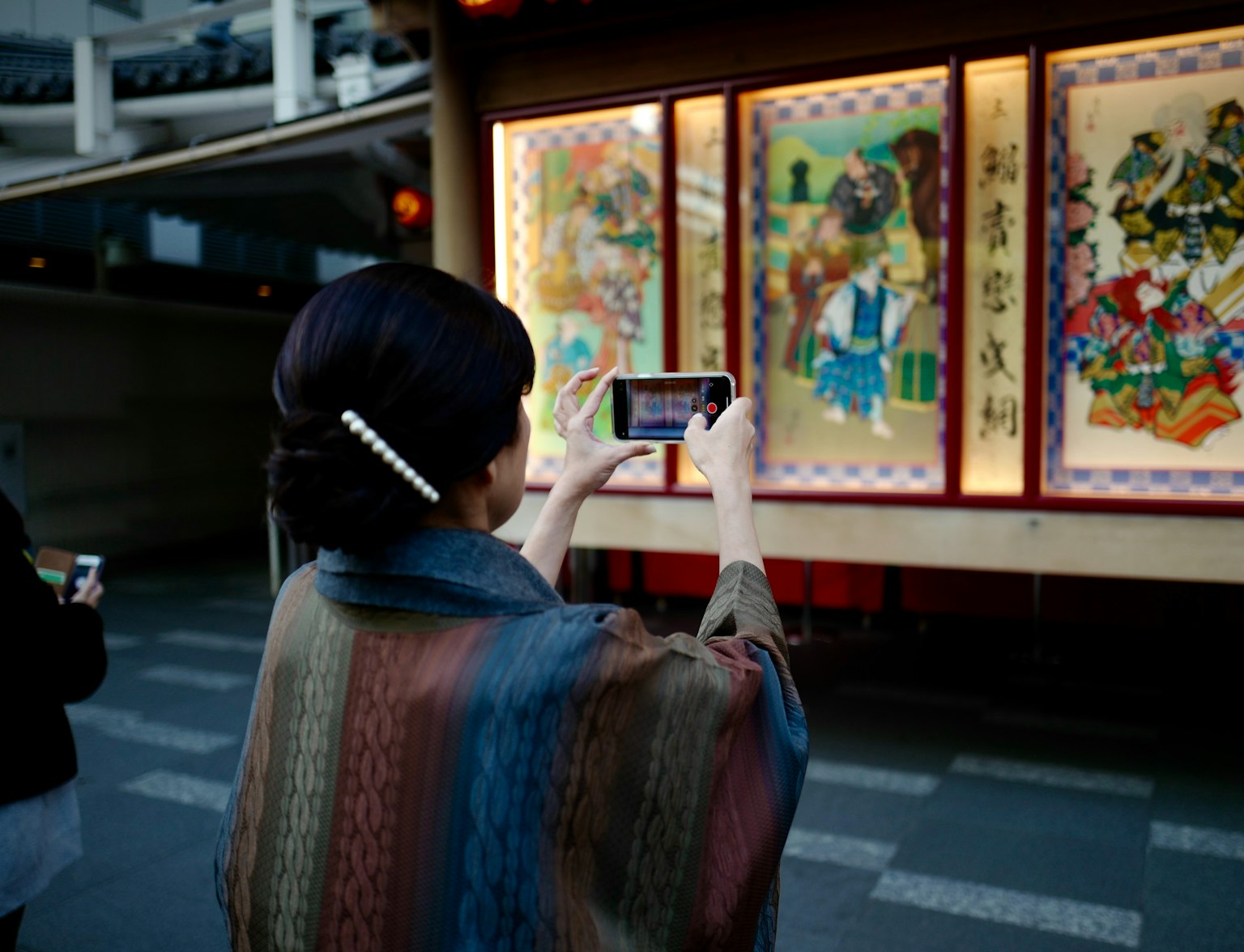
Soak up the serene atmosphere, punctuated by the ageless grandeur of the palace buildings.
The Imperial Household Agency also preserves many important cultural properties, including ancient documents and works of art. These items, although not on public display at the palace, contribute to understanding the imperial family's history and role in Japanese society.
The Famous Gardens of the Palace Complex
The Tokyo Imperial Palace is renowned for its beautiful gardens, which are open to the public and offer a serene escape in the heart of the city. The East Gardens, located on the eastern part of the palace grounds, are the former site of Edo Castle's innermost circles of defense. They now feature a traditional Japanese landscape garden , a tea pavilion, and the remains of the castle tower.
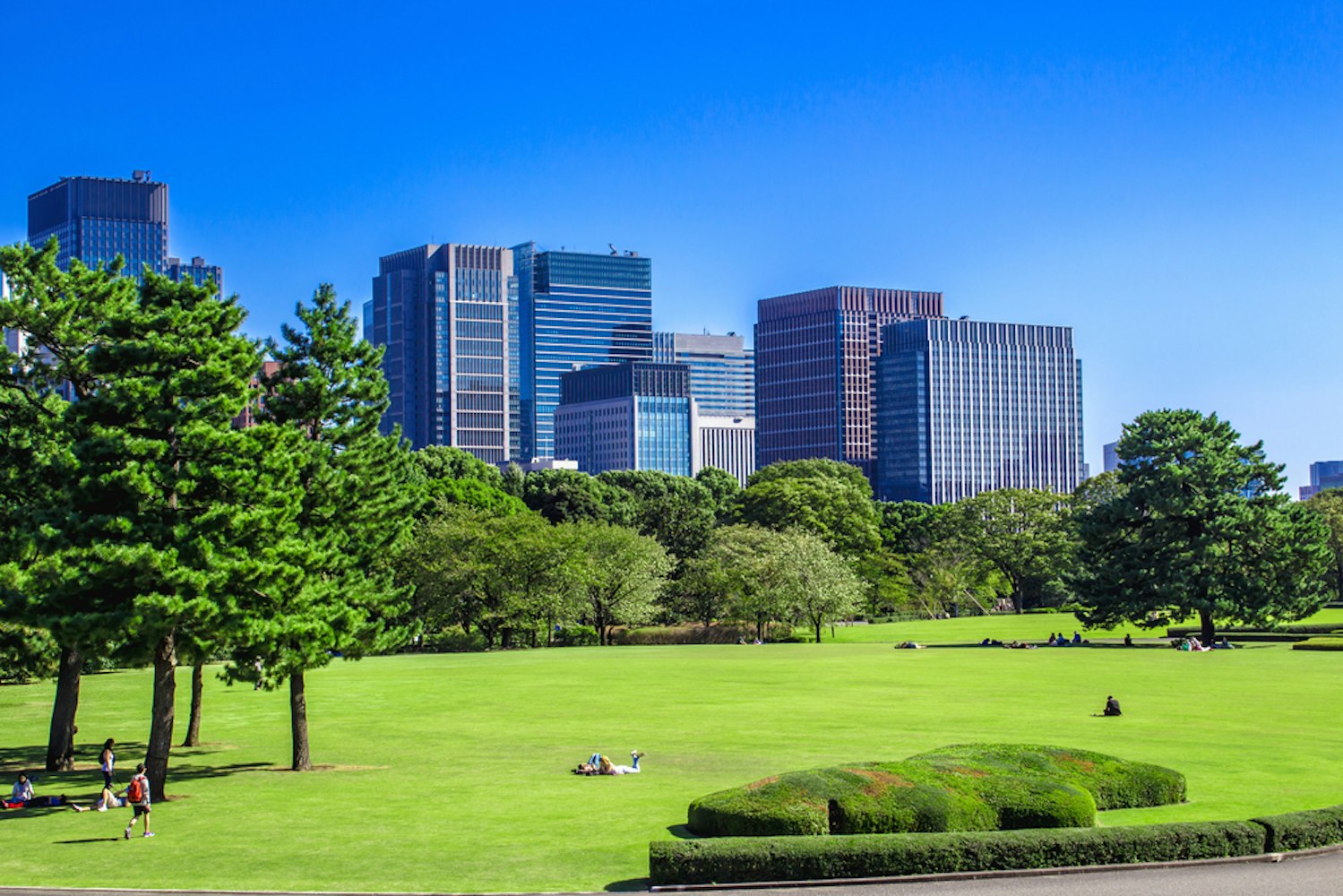
The Outer Gardens, or Kokyo Gaien National Garden, is a large open space in front of the palace where visitors can enjoy the view of the Nijubashi Bridge and the main gate. Kitanomaru Park , another part of the palace grounds, is a public park that was once the location of the shogun's private residence. It now houses several attractions, including the Science Museum and the Nippon Budokan Indoor Arena .
Visiting the Tokyo Imperial Palace
The Tokyo Imperial Palace is conveniently located in central Tokyo, making it easily accessible from various parts of the city. The nearest subway stations are Otemachi Station and Takebashi Station.
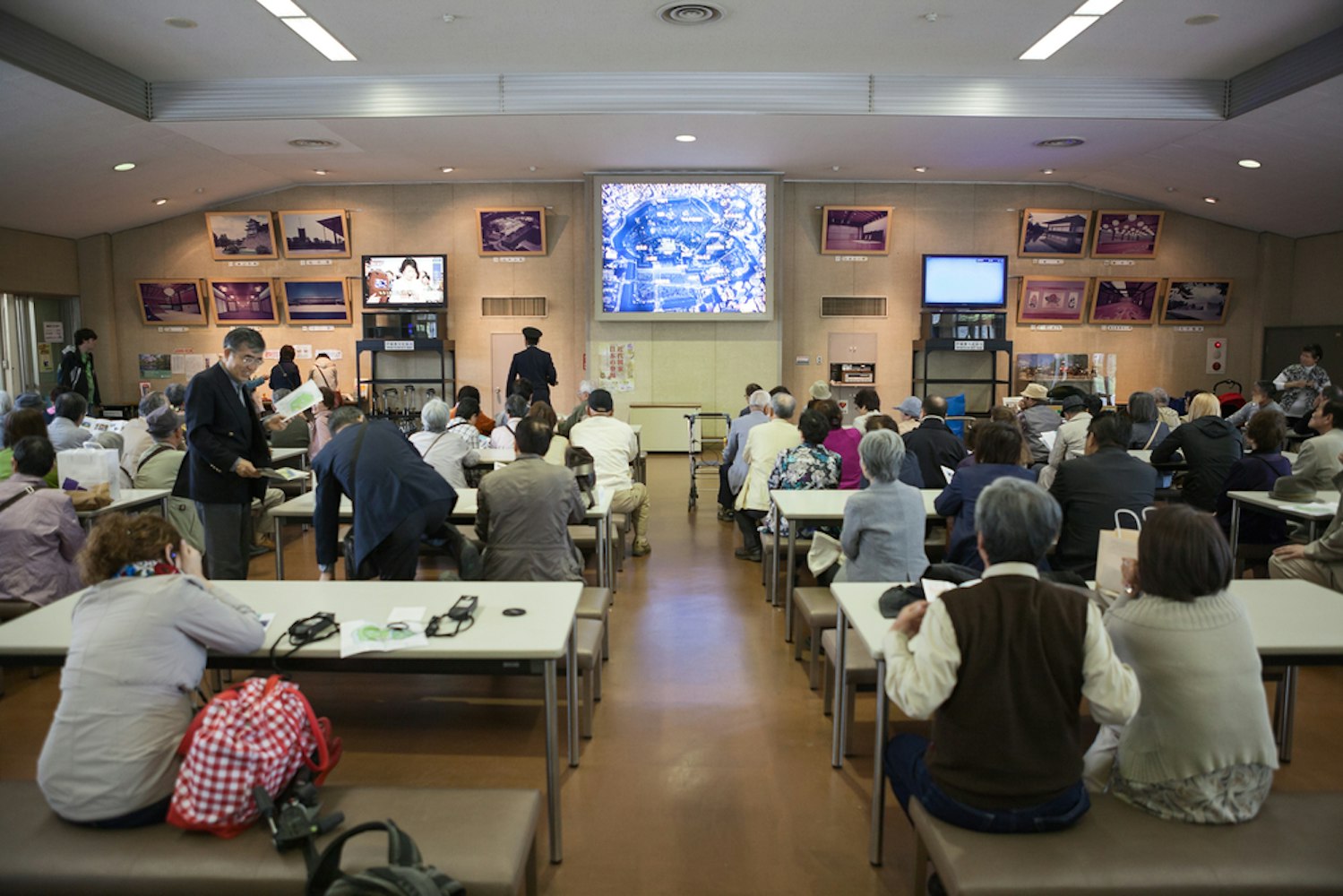
From Otemachi Station, it's a short walk to the Ote-mon Gate, one of the main entrances to the palace grounds. If you're coming from Nijubashimae Station or Takebashi Station, you can enjoy a scenic walk through the Outer Gardens en route to the palace.
Tip: It's worth noting that the palace is tucked away behind moats and thick stone walls, adding an air of seclusion and tranquility despite its central location. If you're using a car, parking may be limited in the area, so using public transportation is recommended.
Best Time to Visit Imperial Palace
The best time to visit Tokyo Imperial Palace is arguably in January, when the general public is allowed entry to the inner grounds on January 2 for the New Year's greeting and on December 23 for the Emperor's Birthday. During these times, visitors can see the Imperial Family, who make several appearances on the balcony of the Chowaden Hall.

The palace grounds and East Garden are open throughout the year, and each season offers unique views. The cherry blossoms in spring and the colorful leaves in autumn make these periods particularly popular among visitors.
Visitor Information – Tickets, Opening Hours, Tours
Entrance to the East Garden is free, and it's open to the public from Tuesday to Saturday. The garden is closed on Mondays and Fridays, except for national holidays. Guided tours of the palace grounds are available in English and Japanese and take about 75 minutes. These tours are held daily at 10:00 and 13:30, except on Sundays and Mondays.
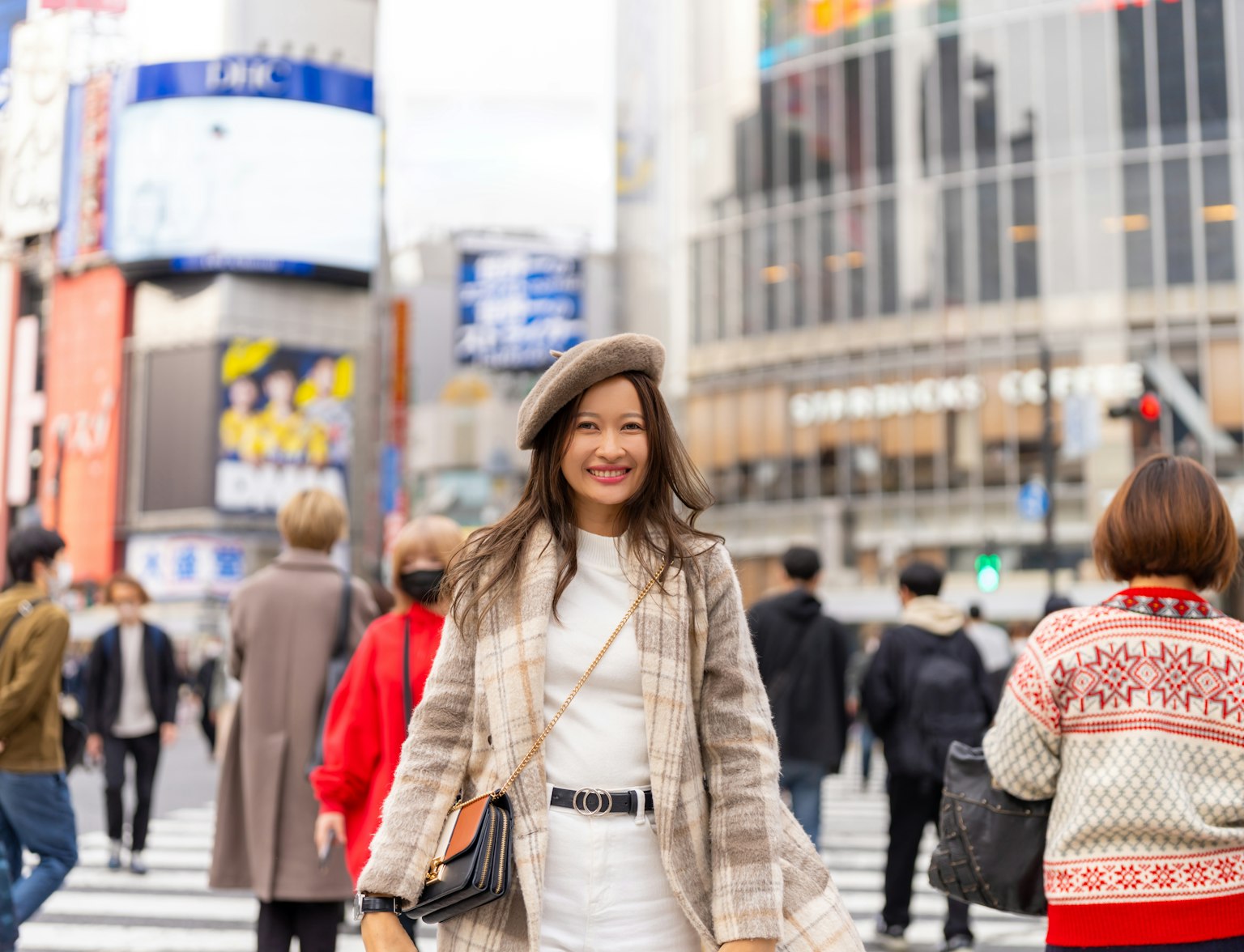
Include the Tokyo Imperial Palace on your custom walking itinerary.
While the tours won't take you inside the palace buildings, they offer a chance to see the beautiful gardens, castle ruins, and historical landmarks like the Double Bridge. The tours meet at the Kikyomon Gate, and visitors are required to go through a security check before starting the tour.

Popular Events at the Tokyo Imperial Palace
The Tokyo Imperial Palace is not just a historic site but also a vibrant cultural hub that hosts numerous popular events throughout the year. One of these is the Sanja Matsuri , a traditional Shinto festival that attracts millions of visitors each year. Another notable event is the Asakusa Samba Carnival, one of Tokyo's most lively and popular summer events, where you can experience a blend of Japanese and Brazilian cultures.

Moreover, the palace grounds are home to a wealth of gardens and galleries that often serve as venues for various cultural exhibitions and public events. For instance, the East Garden, open to the general public, often hosts art exhibitions featuring works from different periods, including the Edo period and modern art.
The Emperor's New Year Greeting and Birthday Celebrations
The Emperor's New Year Greeting is one of the most significant events at the Imperial Palace. On January 2nd, the palace's inner grounds were opened to the general public. The Emperor, along with the rest of the Imperial Family, makes several appearances on the balcony of the Chowaden Hall to wish the people a happy new year.
Similarly, on the Emperor's birthday, December 23rd, the palace grounds are once again opened to the public for celebrations. These events are usually crowded with fans of the Imperial Family. Visitors get an opportunity to see the Emperor and listen to his brief birthday message. It's a unique experience that offers a glimpse into Japan's imperial traditions.
Signing Off from the Imperial Palace
As our exploration of Tokyo's Imperial Palace comes to an end, it's clear that this place is more than just a historical monument or tourist attraction. It's a living, breathing symbol of Japan's rich cultural heritage, encapsulating centuries of history, and the legacy of emperors past.
The Palace isn't just about the stunning architecture or the beautifully manicured gardens, it's about the stories that echo through its halls, the traditions that have been preserved, and the sense of tranquility that pervades every nook and corner.
Frequently Asked Questions
Is tokyo imperial palace free.
Yes, visiting the Tokyo Imperial Palace is free. However, tours require registration, either in advance online or on the day. The East Garden of the palace is also free to enter.
Is the Imperial Palace in Tokyo worth seeing?
Absolutely. The Tokyo Imperial Palace is a symbol of Japan's imperial lineage and rich cultural heritage. It offers a unique blend of history and scenic beauty, with its Japanese-style gardens that can be enjoyed all year round.
Can you go inside the Tokyo Imperial Palace?
Visitors can see the inner palace grounds by registering in advance for a free tour. However, the palace's inner grounds are not generally open to the public.
Why is the Tokyo Imperial Palace famous?
The Tokyo Imperial Palace is famous as it has been the official residence of Japan's Imperial family since 1868. It stands on historic grounds that once housed the Edo Castle, the largest fortress in the world during its prime. Despite several transformations over the centuries, it remains a symbol of Japan's imperial lineage and cultural heritage.
Continue reading
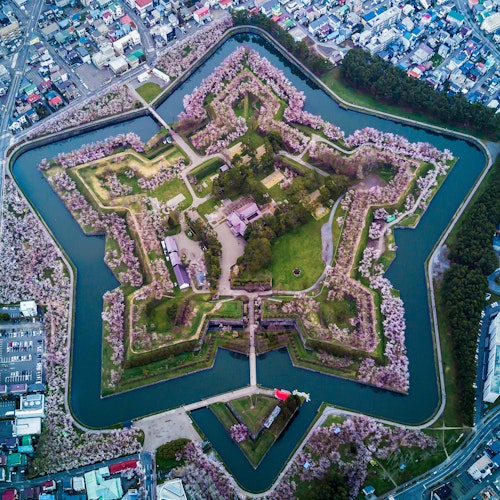
- Tokyo Imperial Palace
Tokyo Imperial Palace: Day Tour
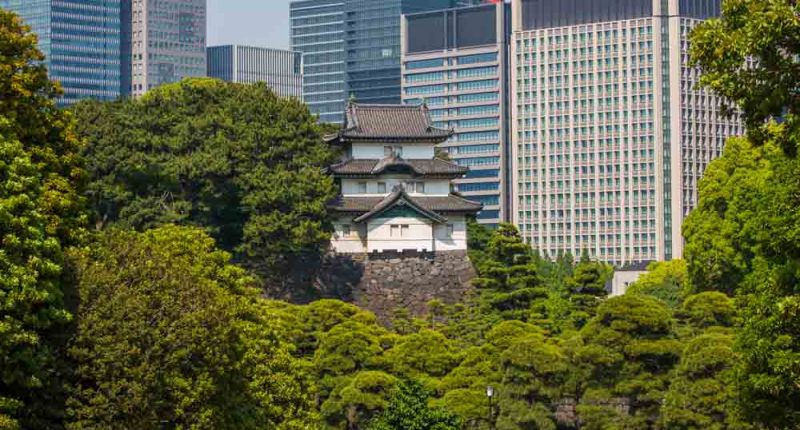
The Omiya Bonsai Art Museum
- Guided Tours
Share article
Signing up for a tour of Tokyo Imperial Palace is one of those things that I had been meaning to do for a long time, but figured I could do anytime so never actually bothered to register.
For those not already aware, Tokyo Imperial Palace is not generally open to members of the public. The closest tourists can usually get to the inner grounds is Seimonishi Bridge to take a picturesque photograph of the famous Nijubashi with Fushimi-Yagura Keep in the distance. There are only two occasions each year when the inner grounds are open to members of the public: 2 January for the New Year’s greeting and the Emperor’s birthday.
The Imperial Household Agency does, however, offer 75-minute tours of a limited section of the inner grounds. It used to be the case that you needed to reserve a place via the official website ; however, in a bid to accommodate the expected increase in tourism in the run up to the 2020 Olympics same-day registration has been possible since mid-2016.
So what of the tour itself? Well, as I mentioned, it is a very limited tour. It is entirely outside; you will not be able to enter any of the buildings in the grounds. The tour departs in groups of over 100 people with the guide taking you past several buildings, explaining a little about the history of each through a portable megaphone.
Given the number of people participating in the tour and the wide open spaces in which the guide gives his introductions, unless you’re at the front of the group you’re going to struggle to hear anything. Audio guides are available in Japanese, English, Chinese, Korean, French and Spanish and can be download to iOS and Android via this link . They do also provide a pamphlet (and a sheet of A4 with translations) that give a one or two sentence explanation about each building, but the tour itself is only conducted in Japanese.
The tour starts from an administrative building near Kikyo-mon Gate . There is a security check before you go through, but there are no restrictions on photographs during the tour so you feel free to take your camera equipment (they only ask you to refrain from large group portraits—presumably because setting up tripods and the whatnot would hold everyone else up). The tour takes you past the following main buildings:
Mt. Fuji View Keep
A 3-storey keep that has withstood much of what nature has thrown at it since its reconstruction in 1659. One of the oldest remnants of the former Edo Castle.
The Imperial Household Agency Building
Head office of the Imperial Household Agency was built in 1935. It was used as the home of the family for some years after the war as reconstruction took place on the Imperial Palace.
Kyuden Totei Plaza
Perhaps somewhat surprisingly, the Imperial Palace itself is—whilst an impressive structure—maybe not what many are expecting. The main building that faces the plaza is called Chowaden (長和殿) a 160-meter long structure with a 100-meter balcony.
The balcony is a lot lower than the television images and newspaper photographs have many believe. The guide explained that images of the imperial family greeting flag-waving visitors on the special occasions when the grounds are open to the general public are deliberately taken from a lower position to give an impression of the balcony being more raised.
Nijubashi & Fushimi-Yagura Keep
These two structures will be familiar to anyone who has visited the Imperial Palace: the ornate stone bridge and the white castle-type structure in the distance that must rank among Tokyo’s most photographed buildings. This is the highlight for many, and is also the turnaround point. The route back takes a slight detour down Yamashita-dori between the Imperial Palace and the Imperial Household Agency building, but is more or less the same as on the way.
Incidentally, the best photograph opportunity on the tour is on the way back as you walk past the small slope that leads to the main building of the palace. Stop here and you can see a beautiful view of Mount Fuji Keep surrounded by greenery with the office buildings of Otemachi in the distance.
The tour is free and, although limited, provides a good glimpse inside the Imperial Palace. The explanations definitely put the tour into a better context so be sure to download an audio guide before you depart, as the pamphlets only give the briefest of descriptions.
Information
You may also like.
- Entertainment
Tokyo Metropolitan Theatre
Robot restaurant, asakusa engei hall, sapporo breweries chiba beer factory.
Tokyo Imperial Palace: All You Need to Know
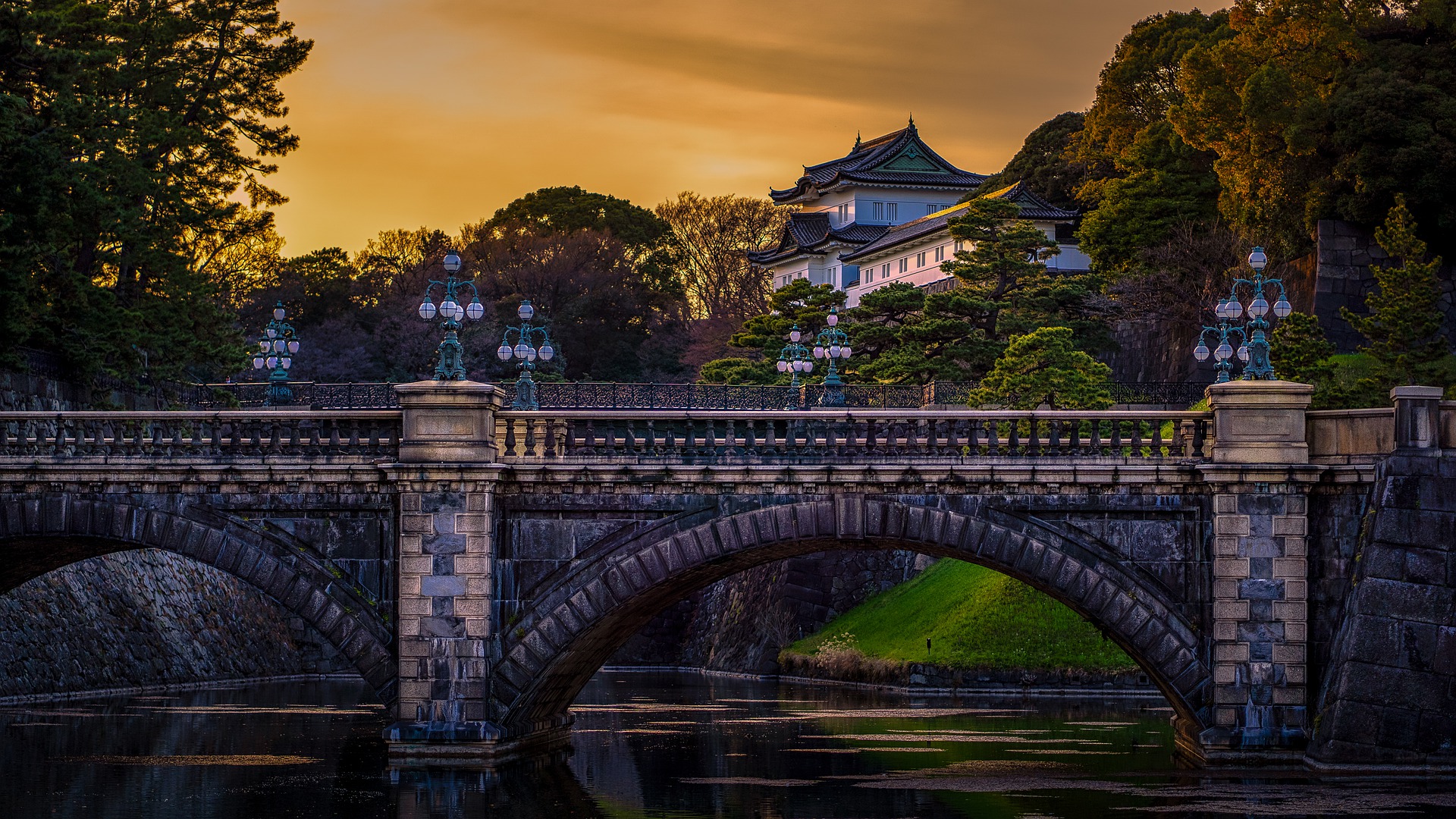
Miho Shimizu is a Japanese freelance writer settled in Shizuoka with her husband and two rabbits. Fascinated with traveling at the age of 18, she has spent most of her long holidays exploring incredible spots around Japan. She also loves to listen to music, draw, and read novels over a cup of green tea.
This post may contain some affiliate links. When you click through and make a purchase we may receive some commission, at no extra cost to you.
As a popular and historic tourist attraction in Tokyo, Imperial Palace is visited by numerous visitors all year round. The current Imperial Palace is built on the former Edo Castle grounds and is surrounded by a moat and large stone walls. It contains several buildings, including some residences for the Imperial Family. It will be impossible to visit these parts of the park-like area, but there are many ways to enjoy the palace buildings and parts of the grounds.
For locals the loop around the Imperial Palace is a popular running spot, where they can enjoy a 5km running course around the scenic palace and its natural surroundings. Despite its prominent location, a short walk from Tokyo Station, information about the palace is often limited compared to other famous tourist spots. What is the Tokyo Imperial Palace? How old is it, and is it really worth a visit? Here is all that you need to know about Tokyo Imperial Palace before your visit!
▼ Want to learn all about the Imperial Palace and more of Tokyo with an expert guide? Be sure to book our private tour!
1. Where is the Tokyo Imperial Palace?
2. brief history of tokyo imperial palace, how to make the most of your time at tokyo imperial palace, 1. the imperial east gardens, 2. kitanomaru park, 3. nijubashi bridge, 4. chidorigafuchi park, japan wonder travel tours in tokyo, other articles you might enjoy.
Tokyo Imperial Palace is located in the very center of Chiyoda-ku, Tokyo. Since 1869, the historical site in Tokyo has been officially used as a residence of Japan’s Imperial family. About a 10min walk from JR Tokyo Station takes you to this historic spot located right at the heart of the metropolitan city. The palace grounds boast beautiful natural spots as well as historic structures which can be found around the massive area including beautiful parks and gardens.
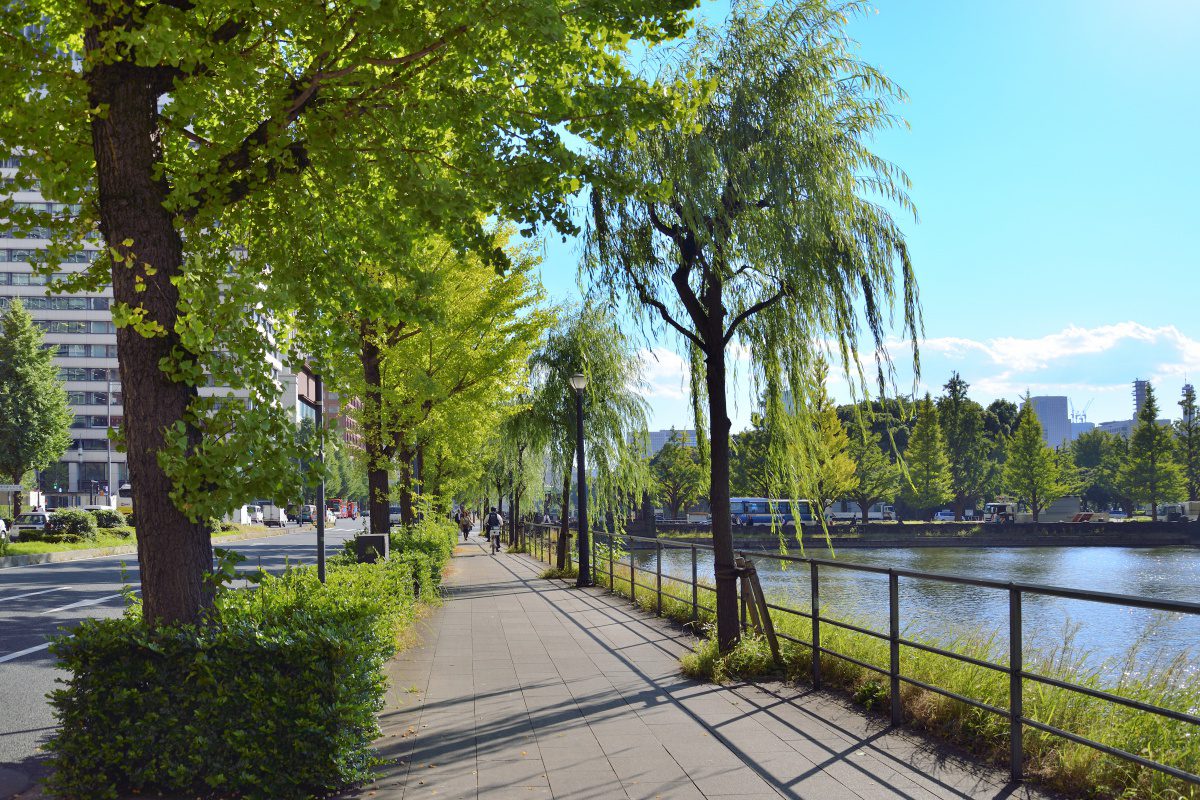
To understand the history of the Tokyo Imperial Palace, we need to travel back to the Edo period which was started by Tokugawa Ieyasu in 1603. Until the end of the Edo period, Japan’s Imperial family resided in Kyoto, the ancient capital of Japan. The Tokugawa family however took up residence in Edo and Edo became a new political and economic center of Japan. The Tokugawa started to lose its influence and power at the second of the 18th century and in 1868, after the Tokugawa Shogunate ruled the entire country for over 260 years, the Tokugawa Shogunate was finally overthrown. This is known as the Meiji Revolution. After the Meiji Revolution, Japan’s Imperial family officially moved into the Imperial Palace in 1869.
The current site of the Imperial Palace was formerly known as the site of the Edo castle, the main castle of Tokugawa Shogunate. The original building of the Imperial palace was unfortunately destroyed during World War II, but completely restored to the similar style close to the original one afterwards.
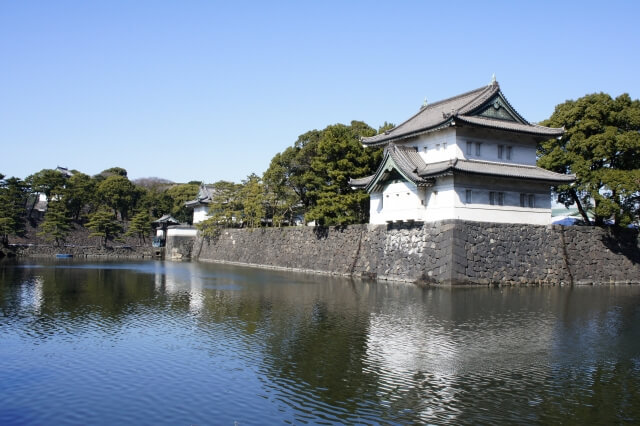
3. Can you visit the Imperial Palace?
Although inside the palace is not open to the public, parts of the Tokyo Imperial Palace are accessible, something that not many people know. A visit to the Imperial Palace is one of the best things to do in Tokyo ! There are free guided tours available that will enable you to explore the inner grounds, but no buildings are visited.
Guided Tours Imperial Palace Daily tours at 10am and 1.30pm (in English & Japanese) Free of charge, but registration required from here

Furthermore, you can visit the adjacent Imperial Palace East Gardens , which have been open to the public since 1968. In the gardens you can see next to a beautiful selection of seasonal flowers, also some of the remnants of Edo castle, some guard houses and other historical buildings. The Imperial East Gardens are closed on Monday and Friday.
As mentioned above, the inner grounds of the palace are generally not open to the public. Only twice a year, on January 2 ( New Year’s Greeting ) and February 23 ( Emperor’s Birthday ), you can enter the inner palace grounds and, when you’re lucky, see some members of the Imperial Family, who make several public appearances on a balcony.
- Explore the lovely gardens featuring lush greenery and scenic spots
- Be an early bird and enjoy the peaceful atmosphere while taking a morning walk around the palace with less crowds
4. What to see at Tokyo Imperial Palace
This beautiful Japanese style garden, which can be enjoyed all year round for free, is among the best Japanese gardens in Tokyo . The gardens are home to a variety of historic structures including giant stone walls, remains of the castle tower and turrets dating back to the Edo period. It is also a perfect spot for admiring seasonal flowers and plants including Japanese iris in June and autumn colors in fall!
Lovely public park which covers the northern part of the spacious ground of Tokyo Imperial Palace. Since its opening in 1969, many people visit the park for bird watching and taking a relaxing stroll in nature. It is also home to a number of popular tourist attractions such as The National Museum of Modern Art, Tokyo !

Nijubashi Bridge is an iconic stone bridge built over the inner moat of the Imperial palace. It is used as a main entrance of the inner palace grounds which is exclusively opened to the public twice a year on January 2 nd and February 23 rd .
On the north west side of Imperial Palace, the Chidorigafuchi Park is a long, narrow park following a palace moat. The park is one of the best places for cherry blossom viewing in Tokyo , with a footpath and vibrant spring cherry blossom views that are illuminated at night! At this part of the moat, boat rental is available to watch the cherry trees in full bloom from the water!
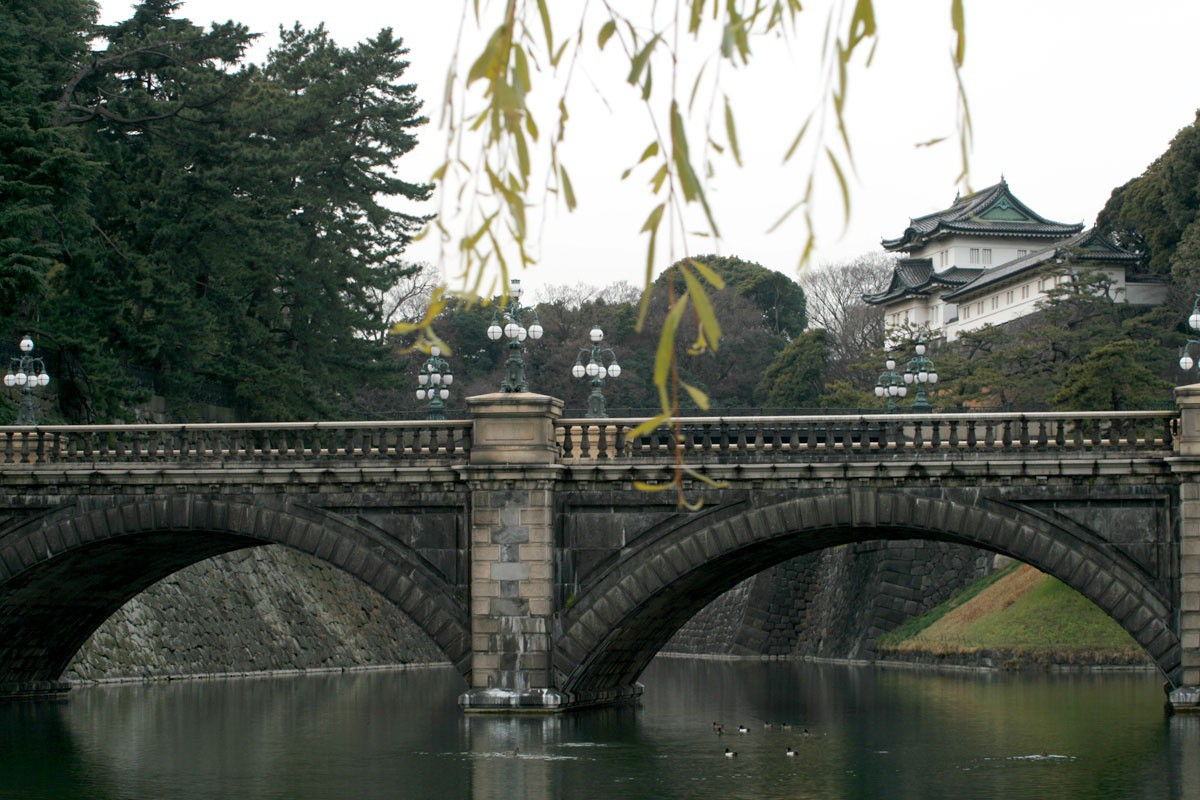
Japan Wonder Travel is a travel agency that offers guided tours throughout Japan. From private walking tours to delicious Food and Drink tours, we can help organize the best tours just for you! If you want to explore Japan and learn more about the history and backstories of each area you are traveling in, our knowledgeable and friendly guides will happily take you to the best spots! In addition, we can provide you with any assistance you may need for your upcoming trip to Japan, so please feel free to contact us if you have any questions or need some help!
▶ Tokyo Tsukiji Fish Market Food and Drink Tour Explore the most lively and popular fish market in Tokyo, where you will have the chance to try some of the local’s favorite street foods and sake along with your friendly English-speaking guide!

▶ Tokyo 1–Day Highlights Private Walking Tour (8 Hours) There’s no better way to explore an area than taking a tour with a knowledgeable local guide. You will have the chance to learn about the history and interesting background stories of Tokyo, as well as discover some hidden gems which can be hard to do without a guide.

▶ Shinjuku Bar Hopping Tour: Experience Tokyo’s Nightlife in Izakaya Check out the best spots in Shinjuku while bar hopping through the lively and vibrant area. Try some delicious local food and drink as you explore the narrow yet photogenic alleys that the town has to offer. Experience Japanese izakaya culture and drink in Shinjuku like the locals!
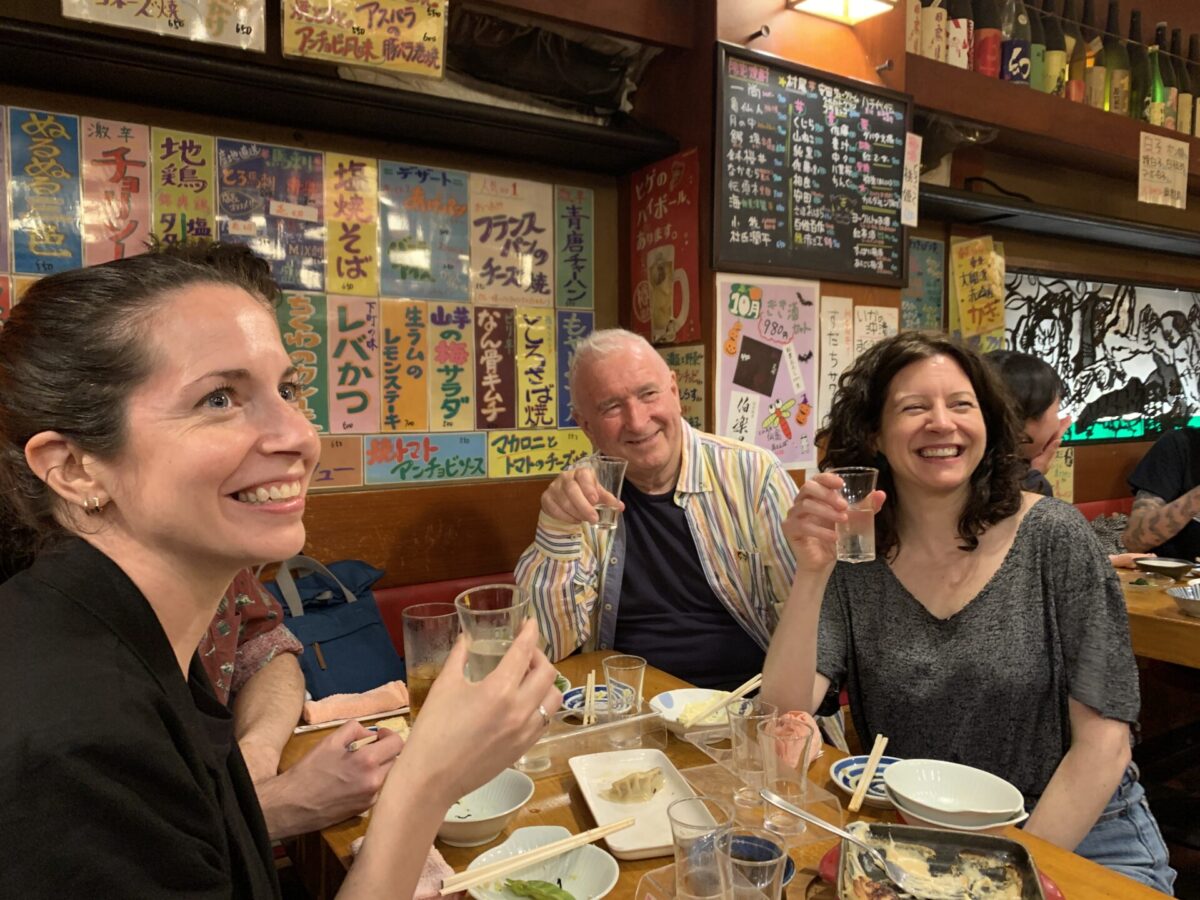
Tokyo is a great city full of exciting spots and bustling experiences. While it attracts numerous tourists from around the world with the busy streets, flashing neon lights and other busy hotspots, there are some ‘hidden spots’ that will make you forget that you are in the middle of the metropole. Many people who visit Tokyo Imperial Palace, don’t know about the free guided tours nor the peaceful Imperial East Gardens. Whether you are interested in Japanese history or not, it is definitely worth a visit to explore scenic gardens or enjoy a refreshing walk around the historic building!
Follow us on Instagram , Facebook , Twitter , and TikTok for more travel inspiration. Or tag us to get featured!
Happy traveling!
Stay informed of the best travel tips to Japan, the most exciting things to do and see, and the top experiences to have with the Japan Wonder Travel Newsletter. Once every two weeks we will introduce you to our latest content.
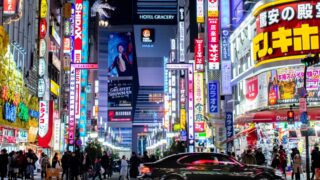
- Popular destinations
- Hidden places in Japan
- Tours and workshop
- Food and drink in Japan
- Itinerary in Japan
- Places to visit in Tokyo
- Food and drink in Tokyo
- Seasonal events
- Tours & workshops
- Tokyo This Week
- Day trip from Tokyo
- Itinerary in Tokyo
- Places to visit in Kyoto
- Food and drink in Kyoto
- Itinerary in Kyoto
- Day trip from Kyoto
- Travel tips
- Accommodation
- Cultural tips
- Transportation
- Tokyo Tours
- Kyoto Tours
- Kimono Rental
- Fukushima Tours
- Mount Fuji Tours
- Tour Package
- Media Kit(English/日本語)
-Wa- Japan Web Magazine

Detailed instructions on how to visit Tōkyō Imperial Palace
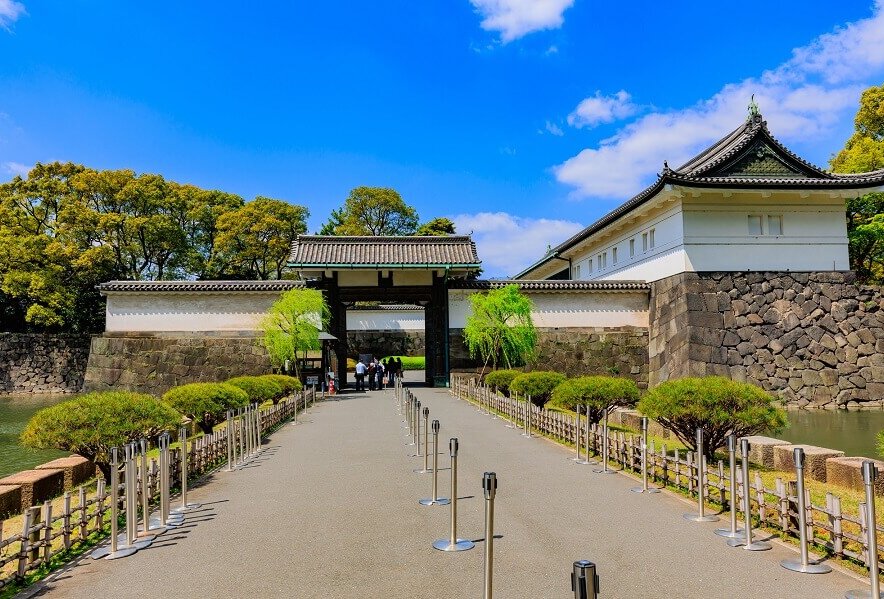
The Imperial Palace is one of the most popular tourist attractions in Tōkyō, Japan.
However, due to limited information about visiting the Royal Palace, it may be difficult for those who come to visit for the first time.
“When is the time to visit the Tōkyō Imperial Palace?” “What’s inside the Imperial Palace?” “Is it possible to see the Emperor just by visiting the Imperial Palace?”
And there are certainly many more questions.
In this article, I will detail how to visit the Tōkyō Imperial Palace so that even your first visit can easily navigate and choose the right schedule.
If you are planning to visit the Tōkyō Imperial Palace, make sure to take note of this information.
Can see The Emperor on 2 special visits at the Tokyo Imperial Palace
Introduction to tōkyō imperial palace.
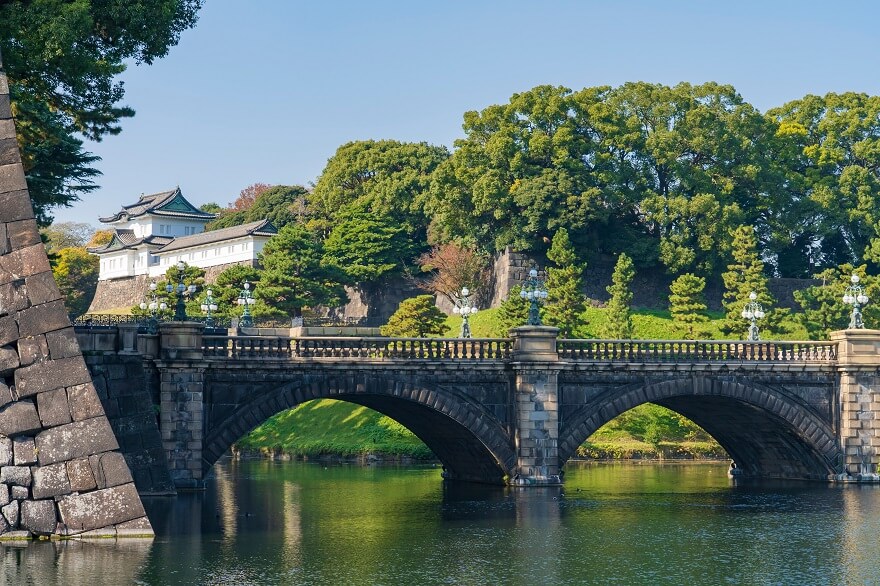
Tōkyō Imperial Palace in Japanese called Kōkyo (皇居), was the residence of successive Emperors from Emperor Meiji to the present Emperor.
The Imperial Palace is located in the heart of Tōkyō, just a 15-minute walk from Tōkyō Station. Surrounded by moats and vast gardens, the Tōkyō Imperial Palace has a dignified and tranquil atmosphere almost isolated from the bustling outside world.
Tōkyō Imperial Palace was originally Edo Castle – the former castle of the Tokugawa Shogunate government*. Therefore, visiting the inside of the Imperial Palace, you will be able to see some architectural remnants such as the foundation of Edo Castle, the gate, the watchtower…
(*) Note: The Tokugawa Shogunate was a powerful Samurai government that controlled the politics and economy of Japan from 1603 to 1867. In 1867, Shogun Tokugawa Yoshinobu officially handed power to the Emperor, ending the Edo era and ushering in the Meiji era.
Outline map of Tōkyō Imperial Palace
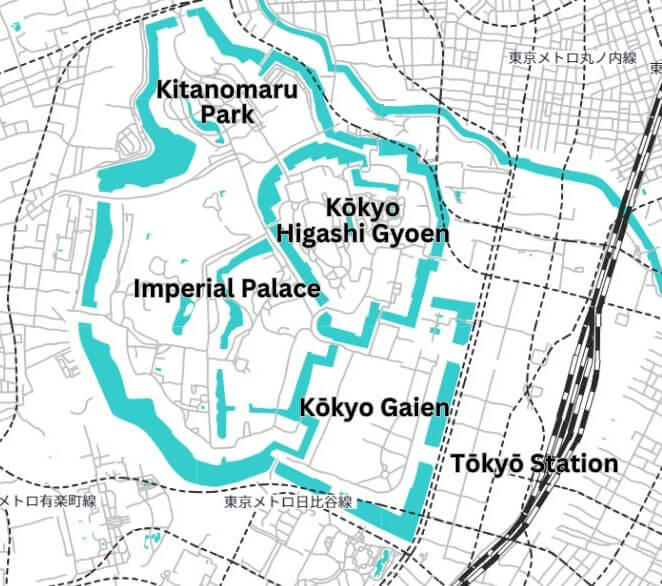
Tōkyō Imperial Palace has 4 main areas:
- The grounds inside the Imperial Palace
- National Park outside the Tōkyō Imperial Palace: Kōkyo Gaien
- Tōkyō Imperial Palace East Garden: Kōkyo Higashi Gyoen
- Tōkyō Imperial Palace North Park: Kitanomaru Kōen
Currently, all four areas above are open to visitors. In particular, if you are lucky enough to visit the Imperial Palace on January 2 and February 23, you can also see the Emperor and his family waving from afar.
In the next content, I will introduce in detail how to visit each area of the Tōkyō Imperial Palace. Make sure to refer to it to make your visit more convenient and enjoyable.
Tour the inside of the Tōkyō Imperial Palace
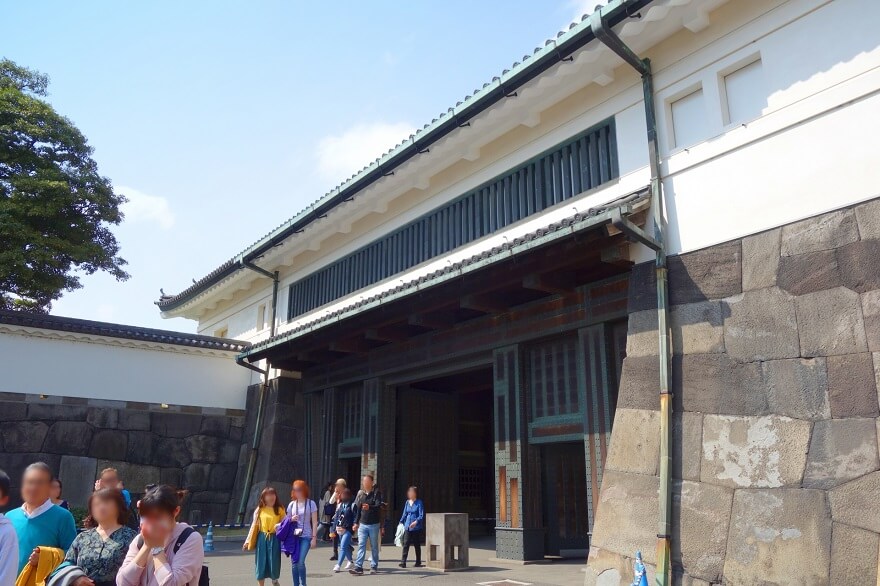
Admission conditions:
- Pre-registration is mandatory (see registration method below)
- Need to show proof such as driver’s license, My Number card, passport, residence card or insurance card… (original)
Ticket price: free
Visiting time: There are 2 tours per day, morning at 10:00, afternoon at 13:30. Each tour lasts about 75 minutes.
- Public Holidays (if it falls on a Saturday, it will still be open)
- Afternoon from July 21 to August 31
- December 28 ~ January 4 next year
- Days with events or maintenance problems
How to register: There are 3 ways to register, which is online registration, pre-registration by phone or directly to the Imperial Palace gate to get tickets on the day you want to visit.
1. Online registration: The registration portal will open from 5:00 am on the 1st of the month before the date you want to visit. For example, if you want to visit in June 2023, you can apply from May 1, 2023. Registration link: https://sankan.kunaicho.go.jp/register/month/1001?locale=ja
2. Pre-registration by phone: Sometimes even though online registration is full, there is still room for phone registration, so you can test call to confirm in person. Phone number: 03-5223-8071 (Available time: 8:45 ~ 12:00 or 13:00 ~ 17:00)
3. Go directly to the Imperial Palace gate to get admission tickets: Admission tickets are issued in front of Kikyō-mon Gate (桔梗門) at 9am (tickets for the tour start at 10am) and 12:30pm (tickets for the tour start at 13:30). Tickets are distributed in order of queue at that time and only 1 ticket per person is allowed.
Number of registrations:
- Register online or by phone: 200 people
- Come get tickets directly: 300 people
The journey takes about 75 minutes with the sightseeing route about 2.2km. A guide (Japanese, English, Chinese) will accompany you throughout the journey.
Meet up at the Kikyō-mon Gate Sōmeikan (rest area) Watchtower Fujimi Yagura Imperial Household Agency East Garden Nijūbashi Bridge Back to East Garden Yamashita-dōri Street Imperial Household Agency End of tour at the Kikyō-mon Gate
How to get to Kikyō-mon Gate:
- 10 minutes walk from Exit No.6 of Nijubashimae Station or Exit D2 of Otemachi Station
- 15 minutes walk from Tokyo Station’s Marunouchi Central Exit
Visit Kōkyo Gaien – the National park outside the Tōkyō Imperial Palace
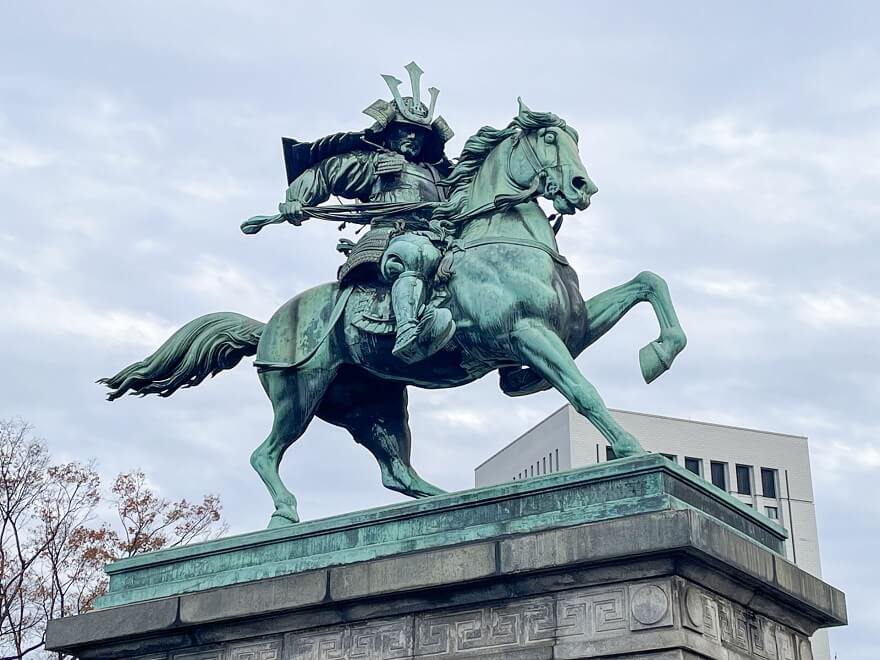
Japanese name: 皇居外苑 (Kōkyo Gaien)
Opening hours: 24/24 However, there may be restrictions on access when there are national events.
Some outstanding attractions:
- Nijūbashi Bridge (二重橋): the iron bridge located at the main gate of the Imperial Palace.
- Sakuradamon Gate (桜田門): the gate has been recognized as an Important Cultural Property of the nation.
- Bronze Statue of Kusunoki Masashige (楠木正成像): a 6.7 ton statue, 8 meters high (including the pedestal) donated by Sumitomo Corporation.
- Black pine forest (クロマツ): about 2,000 black pine trees are scattered on the large lawn, creating an airy and majestic scene.
- Wadakura Fountain Park (和田倉噴水公園): was built in 1961 to celebrate the marriage of the then Emperor and redeveloped in 1995 to celebrate the marriage of the Crown Prince.
- 2 minutes walk from Exit No.2 or Exit B6 of Nijubashimae Station (Tokyo Metro Chiyoda Line)
- 8 minutes walk from Exit No.3 of Sakuradamon Station (Tokyo Metro Yurakucho Line)
- 2 minutes walk from Exit No.2 or Exit B6 of Hibiya Station (Tokyo Metro Hibiya Line)
- 10 minutes walk from JR Tokyo or JR Yurakucho
Visit Kōkyo Higashi Gyoen – East Garden of Tōkyō Imperial Palace
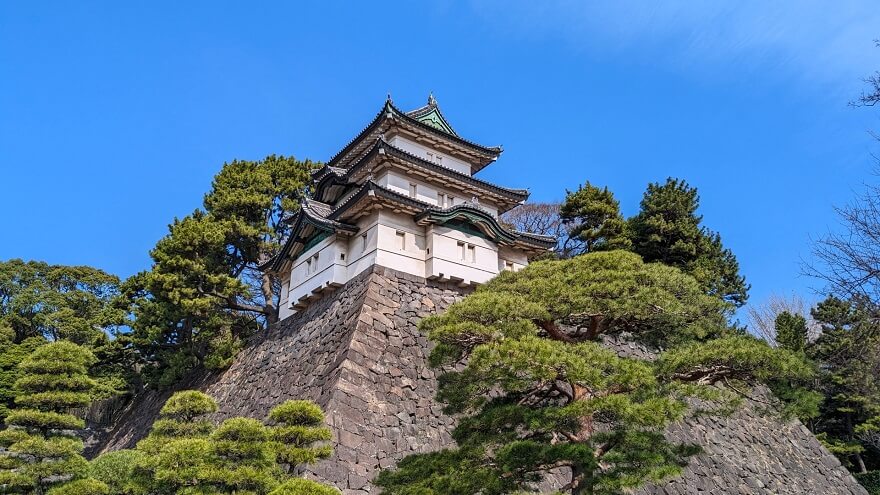
Japanese name: 皇居東御苑 (Kōkyo Higashi Gyoen)
Admission conditions: receive the entrance card when entering and return it when leaving the garden.
Opening hours:
- March 1 ~ April 14: open from 9am to 5pm (last entry is until 4:30pm)
- April 15 ~ end of August: open from 9am to 6pm (last entry is until 5:30pm)
- September 1 ~ end of September: open from 9am to 5pm (last entry is until 4:30pm)
- October 1 ~ end of October: open from 9am to 4:30pm (last entry is until 4pm)
- January 1 ~ end of February: open from 9am to 4pm (last entry is until 3:30pm)
- Monday and Friday However, if Monday or Friday coincides with a national holiday (except for the Emperor’s birthday), it is still open. If Monday is open, it will be closed on Tuesday.
- From December 28 to January 3 next year
- Dates with events or other force majeure reasons
- Ōte-mon Gate (大手門): the main gate of the old Edo Castle, destroyed in 1945 and rebuilt in 1967.
- Fujimi Yagura Watchtower (富士見櫓): 16m high tower, is the only 3-storey tower remaining in the Imperial Palace.
- Tenjudai ruins (天守台): the foundation of the old Edo Castle, 46m wide to the North and South, 42m to the East and West, 10m high.
- Kitahanebashi-mon Gate (北桔橋門): the gate that guarded the old castle. At that time, the bridge in front of the gate was designed so that it could be pulled up so that the enemy could not penetrate.
- Tōkagakudō Music Hall (桃華楽堂): built in 1966 to celebrate Empress Kōjun’s 60th birthday.
- Hirakawa-mon Gate (平川門): is the entrance of the women who worked in the old palace.
There are three gates to the Kōkyo Higashi Gyoen garden, namely the Ōte-mon Gate (大手門), the Hirakawa-mon Gate (平川門) and the Kitahanebashi-mon Gate (北桔橋門).
- 5 minutes walk from Exit C13a of Ōtemachi Station
- 10 minutes walk from Exit No.6 of Nijubashimae Station
- 15 minutes walk from Marunouchi North Exit of JR Tokyo Station
- 5 minutes walk from Exit 1a of Takebashi Station
Visit Kitanomaru Kōen – the park at north of Tokyo Imperial Palace
Japanese name: 北の丸公園 (Kitanomaru Kōen)
- Tayasu-mon Gate (田安門): built in 1636, is the oldest of the existing architectural ruins of the former Edo Castle.
- Shimizu-mon Gate (清水門): rebuilt in 1658.
- Shōwakan National Memorial Museum (昭和館): a place to keep historical documents about the difficult life of Japanese people during and after the war (circa 1935 to 1955).
- National Museum of Modern Art (東京国立近代美術館): is the first national art museum in Japan, which houses documents and artworks from the 19th century to the present.
- National Archives of Japan (国立公文書館): a place to preserve and store historical documents transferred from national administrative agencies.
- 5 minutes walk from Kudanshita Station
- 5 minutes walk from Takebashi Station
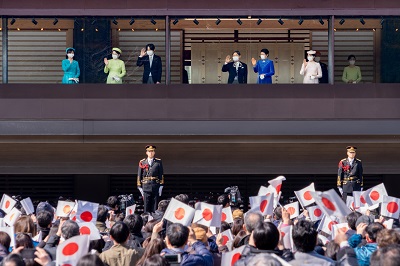
Every year, the Tōkyō Imperial Palace organizes 2 special visits on New Year’s Day (January 2) and the Emperor’s Birthday (February 23).
If you are lucky enough to participate, you will be able to see the Emperor and his family waving from the balcony in the distance.
Of course, not everyone can participate in this special tour, but you need to register (free) and win the lottery.
How to register will be announced on the official website of the Royal Household Agency about 2~3 months before the event. If you are interested, please check the website regularly.
- Details of the New Year’s Day Tour to Tokyo Imperial Palace (January 2): https://www.kunaicho.go.jp/event/sanga/sanga01.html
- Details of the visit to Tokyo Imperial Palace on the Emperor’s birthday (February 23): https://www.kunaicho.go.jp/event/sanga/sanga02.html
In the midst of the bustling and bustling capital Tokyo, the Imperial Palace is like a peaceful and beautiful oasis that gives you the feeling of being lost in another world.
Visiting the inside of the Tōkyō Imperial Palace is of course great, but if you can’t register, you can also stroll through Kōkyo Gaien National Park, Kōkyo Higashi Gyoen East Garden or Kitanomaru Kōen North Park.
Besides the beautiful scenery, each area of the Tōkyō Imperial Palace has historical sites that are sure to give you a deeper insight into Japanese history.
If you have the opportunity to visit Tokyo, you should definitely take the time to visit the Imperial Palace!
- Author: wasabi
Details of the blood donation process in Japan and blood donation locations
Detailed instructions on how to visit Sensoji Temple
- Writer's New Articles
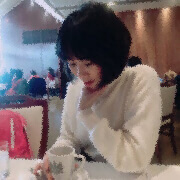
Asakusa One-Day Travel Itinerary in Kimono
7 famous sightseeing spots in Kinugawa Onsen area
20 best things to do in Asakusa (Tokyo)
- 0 Trackbacks
There are no comment yet.
There are no trackback yet.
What is Ikebana? A thorough explanation of the characteristics and basic knowledge of Ikebana
(update 3/2024) discount coupon of demaecan, top 20 tourist attractions in tokyo.

18 best themed cafes and restaurants in TOKYO
How to enjoy tokyo tower, 17 unique animal cafes in tokyo – rabbits, hedgehogs, pigs and many more.

Food & Drinks
Destinations.
- Travel magazine
Free walking tour: Imperial Palace Tokyo - a guide to exploring Japan's royal grounds
(0 - 12 years old)
Book a private experience
January 2, 2024

Hey, I'm Sarah, your go-to guide for all things Tokyo! Originally hailing from San Fransisco, I've been calling Tokyo home for the past seven years, and let me tell you, it's been an exhilarating ride. Today, I'm excited to share one of my absolute favorite attractions: the Imperial Palace.
In the center of Tokyo, this historical marvel isn't just a feast for the eyes; it's a journey through Japan's rich royal history. And the best part? You can experience all its splendor up close with a free walking tour. Trust me, whether you're a history buff or just looking to add some royal flair to your Tokyo tours , this is one adventure you won't want to miss! Let's dive into what makes the Imperial Palace East Gardens truly special.
Book private experiences in Tokyo
When in Osaka make sure to try “kushikatsu”!
Your guide to the Imperial Palace tour

Are you heading to Tokyo's Imperial Palace for a free walking tour? Great choice! When it comes to picking the perfect time, spring and autumn are absolutely stunning. The East Garden bursts into a kaleidoscope of colors that will make your heart skip a beat.
Dress for comfort and respect – you're visiting a royal site, after all. Comfy shoes are essential because there's a lot of ground to cover, and Tokyo's weather can be quite a mix. Dressing up slightly makes those garden photos extra unique, too.
Signing up for the tour is super easy. Just hop onto the Imperial Household Agency's website and choose a slot. They typically have morning and afternoon tours so that you can plan your day around them. The meeting point, right outside the main entrance, is usually hard to miss.
Getting there is part of the fun. From Tokyo Station, it's just a short stroll to the palace. This walkthrough of downtown Tokyo is an experience in itself, taking you from the hustle and bustle of the city to the serene palace grounds.
Remember, the Imperial Palace isn't just another park. It's a historical treasure, standing on the grounds of the former Edo Castle. As you wander through, you're literally walking through layers of Japanese history.
So, gear up for an unforgettable day. Whether you're exploring solo or with friends, this walking tour is a deep dive into Japan's history and culture. And believe me, as someone who's walked these paths often, each visit is like uncovering a new secret of Tokyo.
Revealing the Imperial Palace's gems

Imagine walking where samurais once roamed and emperors ruled – that's the Tokyo Imperial Palace for you. A free walking tour, a favorite among both locals and visitors, starts at the iconic Nijubashi Bridge.
This isn't just any bridge; it's a gateway into a world where history and modernity blend seamlessly. As a tour guide, I always recommend guests take a moment to soak in the view. The bridge, with its classic Japanese architecture, reflects beautifully on the water, creating a perfect, picturesque scene.
From there, we delve into the serene Imperial Palace East Gardens. If you're a morning person, you're in luck. The gardens in the early hours are tranquil, and the light is magical. In spring, cherry blossoms blanket the area, while autumn brings a fiery palette of reds and oranges. These gardens, part of the former Edo Castle's innermost circles of defense, now stand as a testament to Japan's beauty and tradition.
As we meander through the East Gardens, we'll come across remnants of the past that tell the story of Tokyo's evolution. The stone walls and guardhouses are remnants of the former Edo Castle, which once symbolized power and now is a relic of a bygone era. These walls have seen centuries pass by, from the age of shoguns to modern Japan, and they stand as witnesses to the city's incredible transformation.
Our walk then takes us to the expansive Outer Garden. With its wide-open spaces and lush greenery, this area offers a different vibe – it's where Tokyoites come to breathe and relax. The Outer Garden isn't just about natural beauty; it's a cultural hub where you might stumble upon an art exhibition or a traditional Japanese performance. It's a place where the past and present of Japanese culture converge.
Throughout the tour, your tour guides will share insights and anecdotes that make history come alive. They'll talk about the imperial family, the architectural marvels of the palace, and how this place has stood the test of time. And, of course, we can't forget about the photo opportunities – from the majestic gates to the tranquil gardens and the fascinating ruins of Edo Castle, each spot has a unique story to tell.
During your free walking tour at the Imperial Palace East Garden, pause and take a 'Time-Travel Selfie.' Stand against a backdrop that captures the essence of the palace – like the cherry blossoms or the ancient stone walls.
To wrap up, you often stand at a viewpoint that overlooks the palace grounds – a perfect spot to reflect on the journey we've just taken. It's here that many of our guests realize the true essence of Tokyo – a city where every corner has a story, every path leads to a discovery, and history is very much alive.
Joining a free tour of the Tokyo Imperial Palace isn't just about sightseeing; it's an immersive experience of Japanese history and culture. Whether you're a history buff, a nature lover, or simply curious about Tokyo's royal past, this tour is a journey through Japan's imperial heritage.
Beyond the Imperial Palace tour

After exploring the Tokyo Imperial Palace with your free walking tour, you might wonder, "What's next?" Well, Tokyo is a city that never runs out of surprises, and there's plenty to do around the palace area.
Just a stone's throw from the palace, you can dive into Japanese culture at the National Museum of Modern Art. Here, you'll find an impressive collection that perfectly blends traditional Japanese art with striking modern pieces. It's a must-visit for art enthusiasts and a great way to continue the cultural journey after exploring the historical wonders of the palace.
For foodies, I've got a couple of go-to spots. If you are in the mood for some ramen, you should head to Tokyo Ramen Street. Here, you'll find many options and variations of Tokyo-style ramen that's sure to hit the spot. And if ramen isn't your thing, there are plenty of other options, from traditional Japanese eateries to trendy cafes, all within walking distance.
Shopping around the palace is an experience in itself. From quaint souvenir shops where you can pick up unique crafts and keepsakes to upscale boutiques that showcase the best of Japanese fashion, there's something for every shopper. And don't forget to check out the small, hidden-away galleries – they're like treasure troves of local art and crafts.
Now, if you're still hungry for more Tokyo adventures, there are plenty of tours and activities that I personally love. One of my favorites is guiding a tour around the Edo Castle ruins. It's a deep dive into the history of the castle that once stood on the grounds of the Imperial Palace. Another gem is the boat tour along the palace moat, offering a unique perspective of the palace and the surrounding cityscape.
And for those who want to keep the walking spirit alive, there's a beautiful walk from the palace to Tokyo Station. It's a delightful journey through downtown Tokyo, where you'll see the modern cityscape seamlessly transition from the historical elegance of the palace to the bustling energy of one of Tokyo's busiest hubs.
Final thoughts

As we conclude our exploration of the Tokyo Imperial Palace, it's evident that this experience is much more than a simple tour; it's an immersive chapter in Tokyo's narrative. The palace grounds invite you to connect with centuries of history, allowing you to feel Japan's past intertwining with the present.
The Imperial Palace, with its verdant Ninomaru Garden, ancient fortifications, and timeless architecture, stands as more than just a historical landmark. It represents a living, breathing component of Tokyo's soul.
This experience, available through various free and private tours, is generously offered by the Imperial Household Agency. These tours provide an in-depth look into the palace's rich past. Additionally, the Tokyo walking food tour near the palace offers a unique blend of historical insight and local culinary delights, enhancing your experience.
Discover for yourself how history here is not merely remembered but is vibrantly alive, eagerly waiting to be explored and cherished. This free tour experience promises to leave you with a profound appreciation for Tokyo's heritage, where every step tells a story, and every corner holds a piece of history.
Hello, curious traveler! Embark on a unique experience with Hello, curious traveler! Embark on a unique experience with City Unscripted Tokyo. Our personalized, private tours, led by local hosts, make you feel like you’re exploring the city with a knowledgeable friend. We’ll take you to well-known sights and reveal Tokyo’s hidden gems, unveiling stories typically missed by traditional tours. So unscript your journey, and see Tokyo through the eyes of our local hosts!

Top private experiences in Tokyo
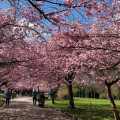
Tokyo in pink: discover the magic of the cherry blossom season

Your perfect half-day in Tokyo

Eat like a true Tokyoite

Epic Tokyo: A full-day tailored exploration

Get a head start: Kickstart your trip to Tokyo

On a roll in Tokyo! The sushi experience
We’ll pair you with the perfect host
There is no better way to see a city than with a friend who lives there. This is why we carefully match guests with their perfect host based on interested, personality and type of experience so they can discover a city beyond the tourist trail.
Find your perfect host and experience using our nifty little tool
Make your inbox happy with our travel tips and inspiration as well as exclusive offers and first access to new services.
You may also like

The best day hikes from Tokyo: Discover Tokyo's natural charms

Where to find the Tokyo tourists won’t see

Where to find the real heart of Tokyo

The best Tokyo Experience: Where to see the hidden gems only locals know about
Drift through Tokyo’s iconic sights

Serene day trip from Tokyo
Explore our cities in japan.

Popular destinations

San Francisco

Mexico City

Read more Tokyo articles
Imperial Palace East Gardens
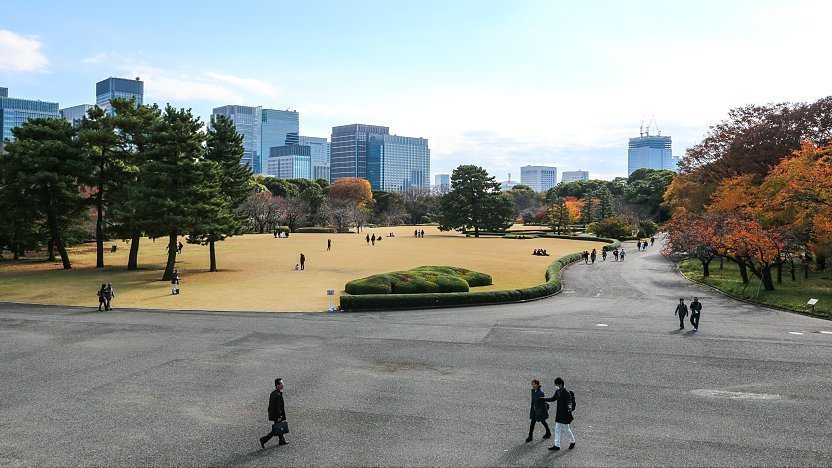
The Imperial Palace East Gardens (�c�����䉑, Kōkyo Higashi Gyoen) are part of the inner palace area and open to the public. They are the former site of Edo Castle's innermost circles of defense, the honmaru ("main circle") and ninomaru ("secondary circle"). None of the main buildings remain today, but the moats, walls, entrance gates and several guardhouses still exist.
Edo Castle was the residence of the Tokugawa shogun who ruled Japan from 1603 to 1867 . Emperor Meiji also resided there from 1868 to 1888 before moving to the newly constructed Imperial Palace .
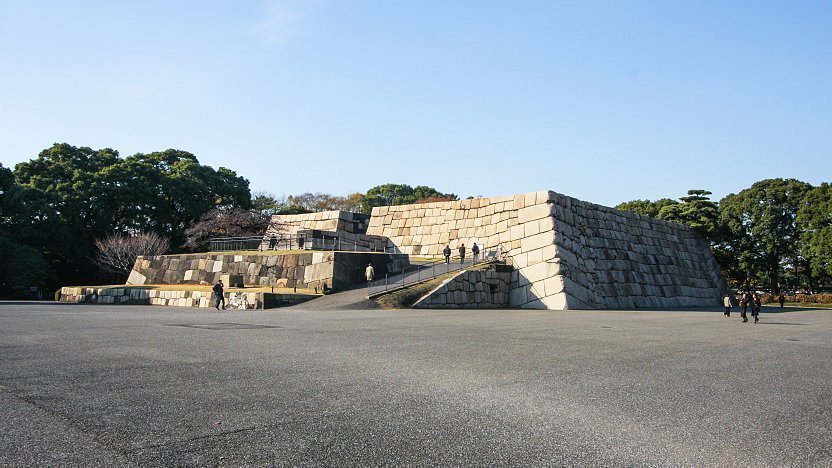
A wide lawn and the remaining foundation of the former castle tower can be found on top of the hill, where the castle's innermost buildings once stood. The castle tower was completed in 1638 as the tallest castle tower in Japan's history. But only a few years later in 1657, it was destroyed by citywide fires and has not been rebuilt since.
In place of the castle's former palace buildings in the secondary circle of defense (ninomaru) at the foot of the hill, a nice Japanese-style garden has been created.
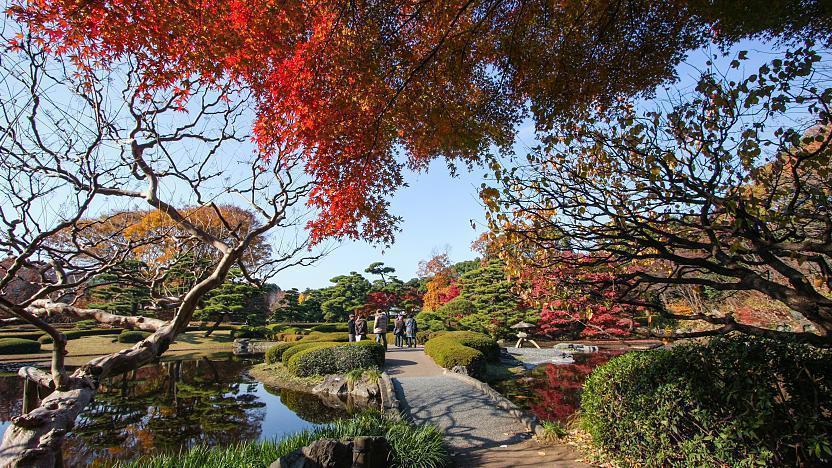
Getting there and around
The Otemon entrance to the East Gardens is a short walk from Otemachi Station on the Chiyoda, Tozai, Marunouchi, Hanzomon and Mita subway lines. It can also be reached in a 10-15 minute walk from Tokyo Station .
Orientation in Tokyo
Hours and Fees
Questions? Ask in our forum .
Links and Resources
Imperial household agency, closing day calendar, hotels around tokyo.
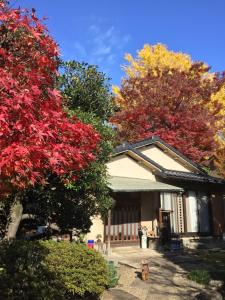
Experiences around Tokyo

- Imperial Household Agency
- Visit Guide
- The Imperial Palace
- Kyoto Imperial Palace
- Kyoto Sento Imperial Palace
- Katsura Imperial Villa
- Shugakuin Imperial Villa
- Application for Visit
- Information of the Facilities
- Flow of Online Application
- Information ; The Imperial Palace
- Information ; Kyoto/Kyoto Sento Imperial Palace,Katsura/Shugakuin Imperial Villa
- About Privacy Policy
- About A Copyright
Protect Your Trip »
The 5 best sightseeing tours of buckingham palace.
See one of Britain's top attractions on a walking, biking, bus or private taxi tour.
The Best Tours of Buckingham Palace

Getty Images
A tour of Buckingham Palace is a must-do on your next London vacation.
On a visit to London , some of the top attractions are linked to the royal family. But nothing is quite as iconic as a visit to the one of the three official residences of the monarchy – Buckingham Palace . While it's only open to the public on select dates, you can relish in its beauty from the regal gates, snap a selfie and catch a Changing the Guard ceremony.
How to Tour Buckingham Palace
For about 10 weeks every summer (select dates from July 11 to Sept. 29, 2024), Buckingham Palace opens its elaborate gates, welcoming visitors to explore its lavish State Rooms, grounds and Royal Collection artworks. The Royal Mews is also open to visitors from March to October, showcasing the Royal Family's real working stables and ornate, historic carriages – including the Gold State Coach used for Queen Elizabeth II's Platinum Coronation in 2022.
The Best Sightseeing Tours of Buckingham Palace
If you aren't here at the right time, fear not; this extravagant, 18th-century royal residence is just as impressive from the outside, making it worth a visit any time of year. Come on a Monday, Wednesday, Friday or Sunday morning to see the Changing the Guard ceremony – when the red-and-black-clad Royal Guard marches toward the palace, accompanied by striking military music – and see a tradition that's been running for more than 300 years. Combine it with explorations in the surrounding area of Westminster to see London at its most quintessential.
You can explore all of this independently, of course – but if you're looking to dig a little deeper, hear about the king's coronation and uncover local secrets, consider a guided London tour . Insider experts can point out the best photo spots, take you to the must-see sights and show you the ins and outs of the area while sharing knowledge of the country's royal history along the way.
There are tons of options out there, so where do you start? Based on local knowledge and traveler review sites, here are some of the most highly rated tours.
Changing of the Guard Walking Tour

Price: From $13
Duration: 2 to 3 hours
Standout perk: Witness the pomp of the iconic Changing the Guard ceremony.
Watch the Royal Guard march toward Buckingham Palace as you witness this historic, quintessentially British spectacle on a two-hour tour of Westminster's highlights. Accompanied by a military band, you'll see the Old Guard (soldiers on duty) switch to the New Guard as they arrive at the palace from Wellington Barracks. Your guide will explain which regiment is which, before taking you on a guided walking tour past other world-famous, attractions, including Big Ben, Clarence House, the Houses of Parliament , St James's Palace and Westminster Abbey .
Recent travelers gave high ratings to the tour, saying guides were able to take them to the best photo spots for the ceremony, while offering a wealth of historical and entertaining insight.
Tours leave at 10 a.m. and depart from the corner of Piccadilly and Arlington Street (between The Ritz and The Wolseley), ending at Parliament Square.
Local tip: Look at the Horse Guards Clock on the Horse Guards Parade – the official entrance to Buckingham Palace and St James's Palace – to see a dark stain above the 2 (II, in Roman numerals). It marks the time King Charles I was executed outside the Palace of Whitehall in 1649, after being charged with treason.
View & Book Tickets: Viator
Windsor Castle & Buckingham Palace Tour

Price: From $164
Duration: 8.5 hours
Standout perk: Get a rare chance to explore the State Rooms with Buckingham Palace tickets, and tick off two of the United Kingdom's grandest royal residences in one day.
This twin-castle tour offers the opportunity to enter Buckingham Palace and see its State Rooms, Royal Collection artwork and other treasures, with commentary from an audio guide. After you've toured the palace, you'll travel by coach about 25 miles west of London to Windsor Castle – the oldest and largest occupied castle in the world, and the family home of the monarchy for more than 900 years. Explore the castle's lavish State Apartments and grounds, and visit St George's Chapel – the burial place of Queen Elizabeth II alongside many other monarchs, and the spot where Prince Harry married Meghan Markle. Recent travelers said the tour was a great opportunity to see inside both palaces. Several commented on the extensive art collection at Buckingham Palace, and many enjoyed hearing insights from the guides, although some complained about long lines. The tour takes place from July through September on select Mondays, Thursdays and Saturdays, and leaves from Victoria Coach Station at 7:45 a.m. Local tip: Windsor Castle has its own Changing the Guard ceremony, as well as its own extensive art collection – the ceremony takes place at 11 a.m. on select days of the week.
Full-day London with Changing of the Guard and Private Cruise

Price: From $158; with optional London Eye or Harrods cream tea for an additional fee
Duration: 9 hours
Standout perk: You'll see many of London's key attractions in one day, and enjoy a river cruise thrown in for good measure.
If you want to combine a visit to see Buckingham Palace's Changing the Guard ceremony with stops at several other London spots, this is a great choice. The full-day trip begins at the UNESCO listed Tower of London where you'll have the chance to see the crown jewels.
From here you'll visit Buckingham Palace to witness the famous pomp and pageantry of the ceremony, and get the chance to admire the palace's impressive architecture from the outside. The day includes a tour of the elaborate St. Paul's Cathedral (not available on Sundays), before embarking on a boat tour of the Thames, passing key attractions including Tower Bridge and Shakespeare's Globe. The day also includes a photo stop at Westminster Abbey, where Prince William and Kate Middleton married in 2011, and a brief walking tour of Parliament Square. Travelers can choose to add a ride on the famous London Eye observation wheel (or opt for a quintessentially British cream tea at Harrods instead).
Recent travelers loved the tour and praised the guides as highly knowledgeable and entertaining. Many were impressed with how much they saw in a day and said it gave them a great introduction to London (although it's worth noting a few felt there was quite a bit of walking involved).
Tours leave from Victoria Coach Station at 7:45 a.m. and finish at the London Eye.
Local tip: If you fancy delving deeper into the Tower of London in your own time, book a ticket to see the Ceremony of the Keys. Dating back seven centuries, this nightly ceremony is when the castle gets locked up for the night, with a special exchange between the sentry and Yeoman Warder taking place at 9:30 p.m. between the atmospheric battlements – both eerie and magical.
Tips on Trips and Expert Picks Newsletter
Travel tips, vacation ideas and more to make your next vacation stellar.
Sign up to receive the latest updates from U.S News & World Report and our trusted partners and sponsors. By clicking submit, you are agreeing to our Terms and Conditions & Privacy Policy .
The London Essentials Bike Tour

Price: From $38
Duration: 3.5 hours
Standout perk: Get active on two wheels, and combine a Buckingham Palace stop with a visit to Kensington Palace and other royal sights.
This half-day guided cycling tour is a great option to get active on your London trip. You'll start at Kensington Gardens – the home of Kensington Palace, where Princess Diana lived with the now King Charles, and Queen Victoria's birthplace. From here, pedal to the Royal Albert Hall to check out this elaborate concert hall, opened by Queen Victoria in 1871. Afterward, cycle through Hyde Park and on to Green Park to reach Buckingham Palace, where your guide will regale you with little-known stories about the palace. Continue on to Trafalgar Square, Westminster Abbey, the Houses of Parliament and Big Ben as you take in some of the capital's key highlights, before returning to the Royal Parks.
Recent travelers raved about the tour and were really impressed by the knowledge of the guide. Many enjoyed the small group size and said the cycling was a good, leisurely pace, with plenty to see along the way, and iced tea and snacks included as a bonus.
The tour leaves from outside the main entrance at Hilton London Hyde Park. The recommended minimum age is 9 – you can pre-book junior bikes and child seats. While the bicycle and helmet for use during the tour are included, attraction entry fees are additional.
Local tip: If you've got time after the tour, it's well worth exploring Kensington Palace a bit more. Admire the elaborate, Georgian-era King's Staircase and the King's State Gallery with its fine art collection, see the Queen's State Apartments where Mary II would come to relax or welcome guests, and visit the Sunken Garden, once a favorite spot of Princess Diana's. After, enjoy afternoon tea or lunch at the Kensington Palace Pavilion amid the gardens.
View & Book Tickets: GetYourGuide
The Premier Classic London: Private 4-Hour Tour in a Black Cab

Price: From $461
Duration: 4 hours
Standout perk: You'll see many of London's must-see attractions, and as it's a private tour, you can tailor the trip to your liking.
If you're after a private tour, this half-day trip in a classic London black cab is just the ticket.
You can choose to align your visit to Buckingham Palace with a Changing the Guard ceremony, and you'll get expert commentary from your personal taxi driver, who's also a registered tour guide. Alongside the palace, you'll pass must-see points including the Houses of Parliament, Downing Street, St James's Palace, the Tower of London, Piccadilly Circus, Shakespeare's Globe, Borough Market and Covent Garden , with options to stop along the way.
Recent travelers loved the tour and said guides were able to tailor the trip, stopping at spots both on and off the tourist trail and offering plenty of historical insight.
Your driver-guide can pick you up and drop you off at your hotel; or a central London location.
Local tip: Make a stop at Borough Market to try some of the best food in the city, with more than 100 stalls offering everything from Persian to Italian, alongside plenty of fresh produce.
Why Trust U.S. News Travel
Laura French is an award-winning British travel writer based in London. She grew up just outside the city and worked around the corner from Buckingham Palace for several years. She loves exploring the surrounding area, and used her own experience alongside online research to compile the roundup.
You might also be interested in:
- The Best Hotels in London
- The Best Harry Potter Tours in London
- The Best Travel Insurance for Europe
The Most Famous Landmarks in the World

Tags: Travel , Tours
World's Best Places To Visit
- # 1 South Island, New Zealand
- # 4 Bora Bora
If you make a purchase from our site, we may earn a commission. This does not affect the quality or independence of our editorial content.
You May Also Like
The best east coast beaches.
April 19, 2024

The Best Luggage Brands
Rachael Hood April 17, 2024

The Best Hard-sided Luggage Picks
Erin Evans , Rachael Hood , Catriona Kendall , Amanda Norcross and Leilani Osmundson April 17, 2024

The Best Carry-on Luggage

The Best Yellowstone National Park Tours
John Rodwan April 17, 2024

The Best Rome Colosseum Tours
Laura Itzkowitz April 17, 2024

Best Alaska Tours
Lyn Mettler April 16, 2024

The Best Fredericksburg Wine Tours

The Best Personal Item Bags
Rachael Hood April 16, 2024

The 17 Best Costa Rica Tours
Lyn Mettler April 12, 2024


IMAGES
VIDEO
COMMENTS
While same-day tickets are available, you can easily skip the queues by making an advance reservation for a ticket through contacting the Imperial Household Agency. The tour is open and distributed from 9:00 for the morning tour starting at 10:00, and 12:30 for the afternoon tour starting at 13:30. The 75-minute tour meets at Kikyomon Gate.
The current Imperial Palace (皇居, Kōkyo) is located on the former site of Edo Castle, a large park area surrounded by moats and massive stone walls in the center of Tokyo, a short walk from Tokyo Station. It is the residence of Japan's Imperial Family. Edo Castle used to be the seat of the Tokugawa shogun who ruled Japan from 1603 until 1867.
If you plan on joining the Imperial Palace tour, meet your guide at the Kikyomon Gate, a 10-minute walk from Nijubashimae Station or Otemachi Station. The center of the new capital. For around 1000 years Kyoto was the capital of Japan, but in 1868 both the capital and Imperial Palace were moved to Tokyo after the Meiji Restoration. This has ...
15,010 reviews. Home to Japan's Emperor, the Tokyo Imperial Palace occupies the site of the original Edo Castle (Edo-jō), the Tokugawa shogunate's castle, which was once the largest fortress in the world. Located in the center of Tokyo, the palace is surrounded by moats and serene gardens. Learn more. 1-1 Chiyoda, Chiyoda, Tokyo, 100-8111.
The Emperor of Japan, one of the most revered symbols of Japan, resides in the Tokyo Imperial Palace. This is one of the tourist attractions with the largest number of visitors in the world. Built over 400 years ago, the Tokyo Imperial Palace is adorned with flowers all year round, with many natural and green spaces, and there are numerous sights to see within. All these are free for the ...
Tokyo: Imperial Palace History Walking Tour. 4.8 / 5 115 reviews. Activity provider: Sunrise Adventure. Add to wishlist. View all 22 images. 1 / 22. Join a local guide on a historic walking tour through the remains of the old-era Imperial Palace in Tokyo. Enjoy the peaceful gardens while getting to know how Japan became the country it is today.
Guided tours of Tokyo Imperial Palace. ... You will also get pretty close to the Imperial Palace itself, and can see the more modern additions to the royal grounds. Tokyo Imperial Palace tours are free but require registration, either in advance online or on the day. Currently, only 120 guests are accepted each day (previously 500), with 70 ...
Find things to do in Tokyo. Discover all the highlights of the Imperial Palace with a national-licensed English-speaking guide. Travel back 400 years in time to the days of the Shogun up until the WWII restoration of the palace. Get to see Kokyo Gaien plaza, the vast East Gardens, and the Nijubashi and Meganebashi bridges.
This private tour takes you to many important places in Tokyo to experience incredible art, learn about Tokyo's history, and appreciate scenic nature spots too. Save time planning your own itinerary and benefit from a guide's expertise and local knowledge. The tour goes to the Imperial Palace, Wadakura Fountain Park, the National Museum of Modern Art Crafts Gallery, Kitanomaru Park, and ...
Tokyo Imperial Palace is in Chiyoda ward, right at the center of the Japanese capital. The compound is surrounded by its original moats and is known to shelter Kokyo, the Emperor's current residence, as well as several parks, some of which opened to the public. Contents. Tour of the grounds available throughout the year.
Tailored Tokyo city tour based on request. Rail Tours. from. $396.78. per group (up to 6) The area. 1-1 Chiyoda, Chiyoda 100-8111 Tokyo Prefecture. Neighborhood: Ginza / Tokyo Nihonbashi. Ginza is famous for being a trendy hotspot, but it's also a downtown area with shops that were founded over a hundred years ago.
Various ceremonies and public activities are held there too. Other major buildings in the Palace include the building of the Imperial Household Agency and the Palace Sericulture Centre, where the successive Empresses have raised silkworms following the precedent set in 1871 by Empress Dowager Shoken, Empress and consort of Emperor Meiji.
Mar. 31, 2024. Join our essential Tokyo walking tour and discover the city's rich history. Visit the Imperial Palace Gardens, marvel at the bustling Tokyo Station, cross the historic Nihonbashi Bridge, and explore the iconic Nihonbashi Mitsukoshi, Japan's oldest department store. Perfect for first-time visitors, this tour offers a unique ...
The Tokyo Imperial Palace, the official residence of Japan's Imperial family since 1868, stands on historic grounds that once housed the Edo Castle, built in 1457. The castle, which was the largest fortress in the world during its prime, changed hands numerous times and underwent several transformations before being converted into the Imperial ...
Perhaps somewhat surprisingly, the Imperial Palace itself is—whilst an impressive structure—maybe not what many are expecting. The main building that faces the plaza is called Chowaden (長和殿) a 160-meter long structure with a 100-meter balcony. The balcony is a lot lower than the television images and newspaper photographs have many ...
1. Where is the Tokyo Imperial Palace? Tokyo Imperial Palace is located in the very center of Chiyoda-ku, Tokyo. Since 1869, the historical site in Tokyo has been officially used as a residence of Japan's Imperial family. About a 10min walk from JR Tokyo Station takes you to this historic spot located right at the heart of the metropolitan city. The palace grounds boast beautiful natural ...
03:05 - Source: CNN. In addition to getting a rare glimpse of the royal family at their home, visitors will have a chance to go inside the Imperial Palace. The palace, a 10-minute walk from Tokyo ...
Pre-registration is mandatory, Ticket price: free, Tokyo Imperial Palace has 4 main areas: 1.The grounds inside the Royal Palace,2. National Park outside the Tōkyō Imperial Palace: Kōkyo Gaien,3. Tōkyō Imperial Palace East Garden: Kōkyo Higashi Gyoen, 4. Tōkyō Imperial Palace North Park: Kitanomaru Kōen
Learn about and visit the Tokyo Imperial Palace, one of Japan's most important and popular travel attractions. (日本語字幕付き) COMMENT: Where in Japan should we tr...
The Tokyo Imperial Palace (皇居, Kōkyo, literally 'Imperial Residence') is the main residence of the Emperor of Japan.It is a large park-like area located in the Chiyoda district of the Chiyoda ward of Tokyo and contains several buildings including the Fukiage Palace (吹上御所, Fukiage gosho) where the Emperor has his living quarters, the main palace (宮殿, Kyūden) where various ...
Joining a free tour of the Tokyo Imperial Palace isn't just about sightseeing; it's an immersive experience of Japanese history and culture. Whether you're a history buff, a nature lover, or simply curious about Tokyo's royal past, this tour is a journey through Japan's imperial heritage. Beyond the Imperial Palace tour.
Mid-range. Situated in Tokyo, 300 metres from Asakusa Fujiasama Shrine and 7.5 km from the centre, cyashitsu ryokan asakusa features air-conditioned accommodation with free WiFi, and an open-air bath. This 3-star ryokan offers a lift and full-day security. The ryokan has a hot tub and luggage storage space.
the Facilities. Information ; The Imperial Palace. Information ; Kyoto/Kyoto Sento Imperial Palace,Katsura/Shugakuin Imperial Villa.
For about 10 weeks every summer (select dates from July 11 to Sept. 29, 2024), Buckingham Palace opens its elaborate gates, welcoming visitors to explore its lavish State Rooms, grounds and Royal ...